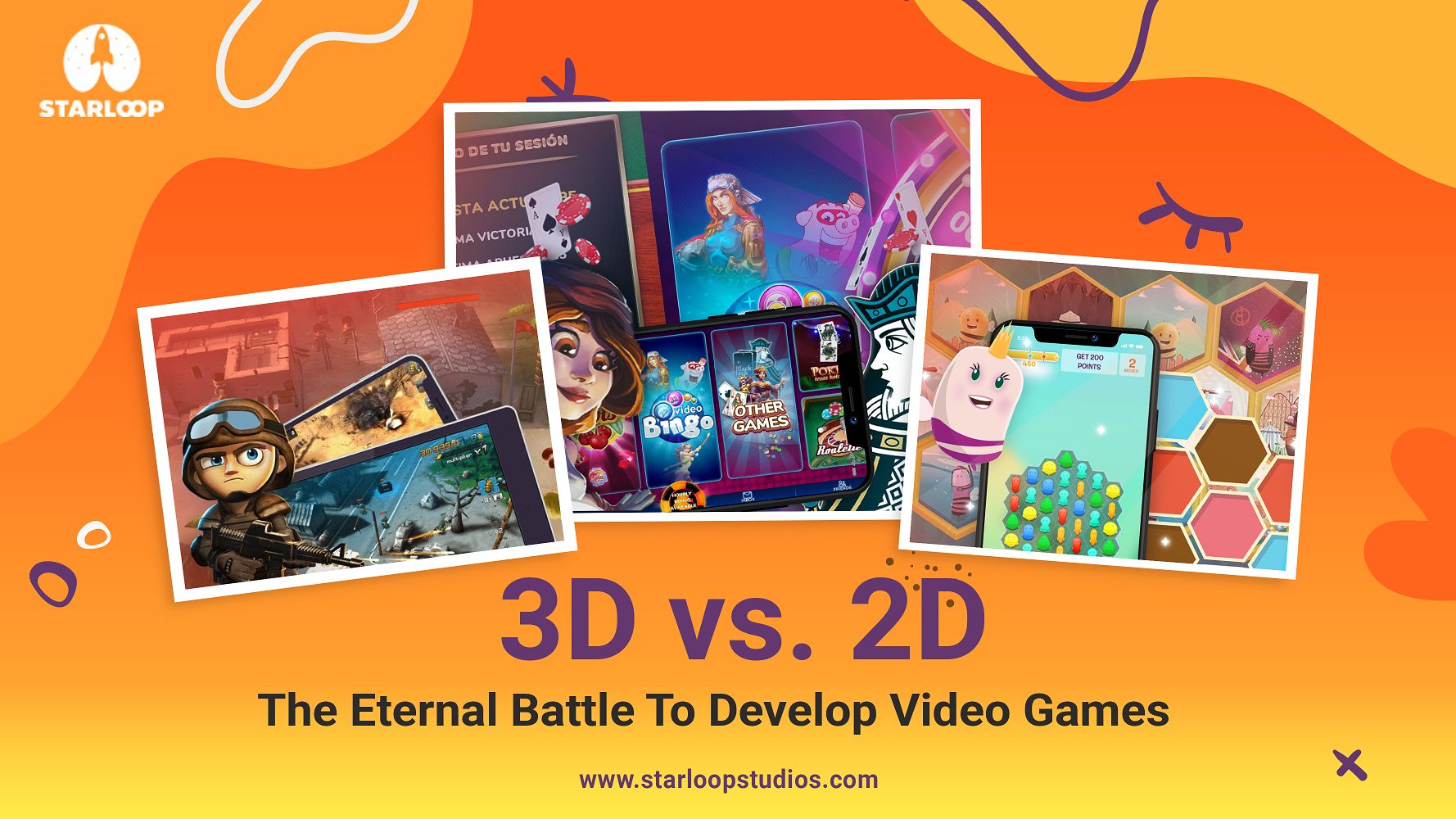

3D Vs. 2D: The Eternal Battle to Develop Video Games
With the advancement of computer technology and the development of the video game industry, players want to experience increasingly realistic gaming adventures at superior quality and as authentic as possible . From the beginnings of the video game industry until the mid-1990s, 2D games were the norm.
At that time, it was not even possible to use 3D technology. When 2D games first appeared, they seemed incredible, but 2D effects turned into 3D game effects , gaining much faster growth due to this maturing industry. Nowadays, 3D technology is so sophisticated that the scenes in some video games are so natural, almost like those in movies. That doesn’t mean that 2D games are left in the shadows. Each type of game has its audience of players. Both 2D and 3D have pros and cons.
The video game industry has grown so much that video game developers launch games on different platforms every day, and they are no longer limited to 2D and 3D games. Players love to spend their time online playing interactive video games, both 2D or 3D. According to the ‘State of Online Gaming 2021’, a report commissioned by Limelight Networks, Inc., gamers worldwide are spending an average of 8 hours and 27 minutes each week playing video games , while Indian gamers spent more than 8 hours and 36 minutes.
Differences between 2D and 3D design on video games
The primary difference between 2D design and 3D design in video games is the dimension . Precisely, the two-dimensional images in video games are flat (flat graphics, flat characters, medium flat, etc.), in contrast with the three-dimensional world that contains images with depth, similar to the real world. This difference between 2D and 3D leads to other differences in controls, the game’s objective, the movement of the characters, and the environment.
For example, the character’s movement in 2D games is linear , in different directions, but usually, the character is moving only forward. That is also due to the game environment, which is flat. The characters have a starting point and an endpoint , where the character must reach the game’s goal. Being a linear medium, character control is relatively simple, ideal for beginners or people who are not used to playing video games so often.
The objective of a 2D game is closely related to the mechanisms and commands of the characters , so if they are simple, the goals will be just easy to reach. The ease with which players play 2D games makes them suitable for beginners, bringing more audience. Also, game developers find it easier to develop 2D games than 3D. Due to the lower level of complexity, game developers invest less time and money to create 2D games, and following updates are easier to do.
In 3D games, the character walks openly and has a lot of freedom of movement due to the three-dimensional plan of the game . The character can move in any direction, so controlling it is more complicated than in 2D games. The environment and the visual of the game are better defined, with more details, having height and depth. From the point of view of the player’s objective in a 3D game, the possibilities are numerous, depending on the game genre.
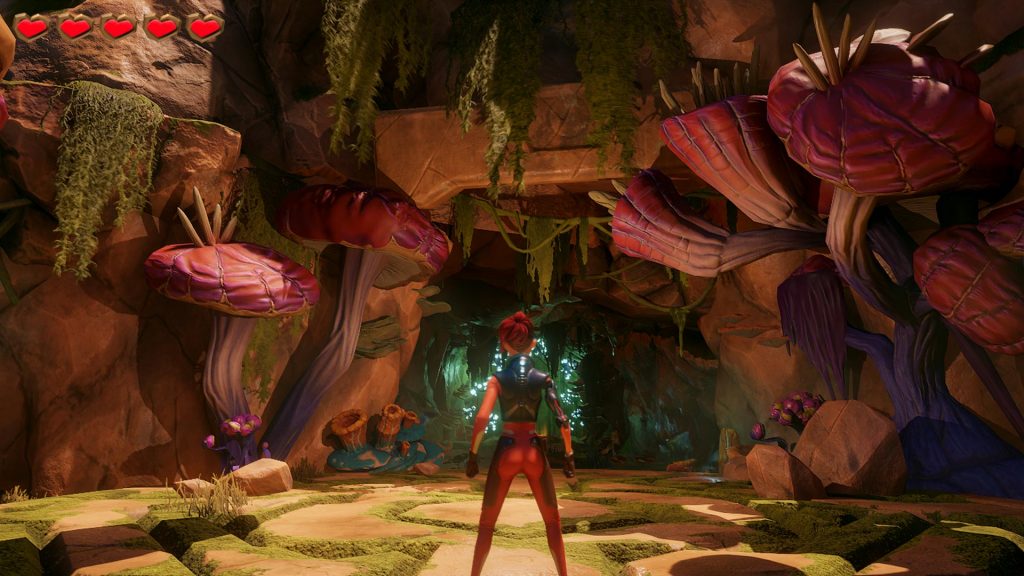
Image Source: www.learn.unity.com
What is better for a video game? 3D or 2D design?
Unlike 2D games that work everything directly in pixel coordinates, 3D games have an actual 3D scene and a camera that moves through it. The player perceives the game world as presented in the camera. 2D games often create a false depth using artificial parallax and offsetting the sprites at an angle. In 3D games, depth is genuine and falls out naturally from the math.
Although 2D and 3D video games each have their audience, many players believe that 3D games would be better due to some advantages that they consider superior to 2D. But the benefits that 3D games offer do not damage in any way the future of 2D games. 2D games are more popular than ever since they first appeared in the game industry. Both 2D and 3D video games are excellent in their way and do not overrule each other.
Retro hobby: reasons for lovers of 2D in video games
2D lovers have some well-founded reasons why they like to play video games created in two dimensions. For example, they don’t stress out with character control because the controls are simple. 2D games are like “tap and play” with straightforward game instructions. Also, the gaming interface is quite simple, which allows players to understand how to play while providing a hassle-free user experience. Being less complex, the size of 2D games is smaller, making them easier to download and perfect for mobile devices.
The reasons for lovers of 3D video games
Three Dimension gives players real feelings and makes an emotional connection to video games. The 3D graphic enhancements in games offer a sense as realistic as possible to the players. The most dedicated of them love this feeling provided by the depth and volume of the characters and the environment, which they can’t get in 2D games.
3D games have become increasingly popular due to the complexity of graphics, video game art , and high-quality design. These features are attractive in the eyes of the players. At the same time, they love the versatility they encounter in 3D games. The multitude of missions they can complete and the diversity of objectives bring 3D games to the top players’ preferences.
And for a designer, is 2D or 3D better?
In general, 3D games are more complex for game developers , and high performance is harder to achieve. Also, the pipelines are more complicated to develop and maintain in 3D games. Unlike 2D games in which the animations have just a film strip of frames with possibly different positions for each frame, in 3D games, game developers need to deal with separate animation assets, bones, skinning, etc.
On the other hand, if the characters are more complex, in 3D games creating their movement could be easier than in 2D. In 2D games, game developers must be redrawing the character completely for each pose.
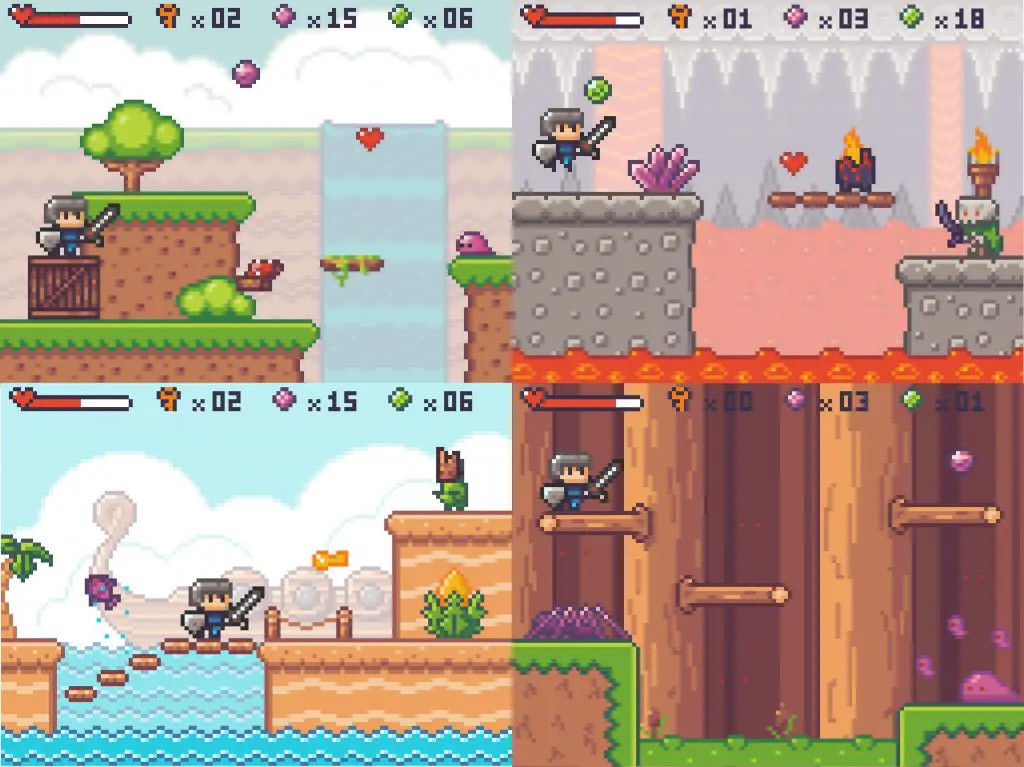
3D video game design requires more time and more significant financial investment from developers. That is due to the need for a larger team of game developers and artists and the additional tools they use in developing 3D animations. On top of the most used tools used by game developers to create 2D and 3D games is Unity – 50% of all mobile games are made with it. Among the popular tools that game developers use for video game development, there is also Unreal Engine 4 , used primarily for high-quality 3D games. It is the most professional and advanced on the market, so the big game development studios use it to create AAA titles.
At Starloop Studios , we use Unity to create amazing 2D and 3D games on all platforms, based on C #; we also love to create stunning lighting and visual effects with Unreal Engine, the top 3D visual game engine.
When it comes to 3D animation , either characters or environments, our talented artists can create any models you want and breathe life into them. Also, Starloop Studios delivers a wide range of 2D animation services to all industries.
Starloop Studios is proud to be part of the Magic Media group, an international group specialising in entertainment and gaming industry services. Our wide range of offerings includes VFX , blockchain gaming , game art services , and more. Reach out today to avail of our expertise and A-Z services for your projects.
Contact Starloop Studios today to learn more about our expert high-quality game development services for all platforms. Contact Starloop Studios today to learn more about our expert high-quality game development services for all platforms. As part of Magic Media, we offer a wide range of services for the gaming, entertainment, and tech industries, including but not limited to full-cycle game development, game trailer production, and real-time VFX. Get in contact today, and let’s create magic!
Get in touch with starloop studios, related posts.
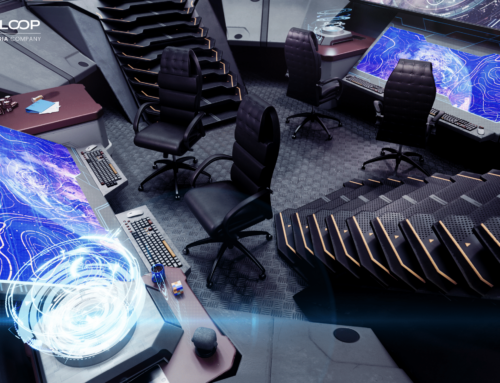
Navigating the Challenges of Android Game Ports
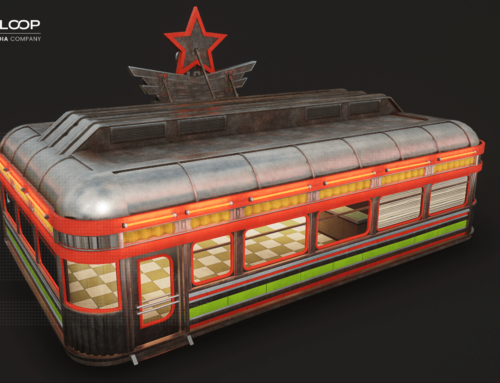
Top Considerations for Nintendo Switch Ports
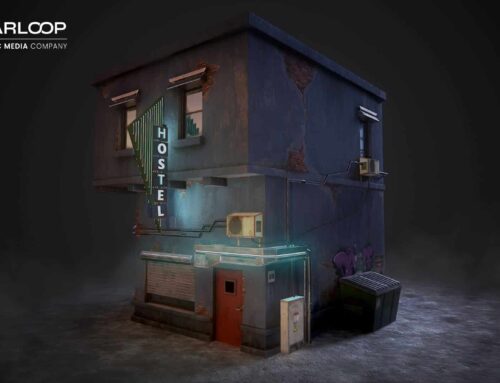
Purpose and Process of Game Remasters
Game development services, game art services.
- [email protected]
- Phone: (+34) 973525189
- Office: Avinguda Onze de Setembre, 4 Baixos 25005 Lleida, Spain
- Privacy Policy
- Legal Advice
- Cookie Policy
Copyright © 2022, Starloop Studios. All rights reserved.
Privacy Overview
Click through the PLOS taxonomy to find articles in your field.
For more information about PLOS Subject Areas, click here .
Loading metrics
Open Access
Peer-reviewed
Research Article
The same video game in 2D, 3D or virtual reality – How does technology impact game evaluation and brand placements?
Roles Conceptualization, Data curation, Formal analysis, Investigation, Methodology, Project administration, Validation, Visualization, Writing – original draft
* E-mail: [email protected]
Affiliation Department of Marketing & International Management, Alpen-Adria-Universität Klagenfurt, Klagenfurt, Austria
Roles Conceptualization, Supervision, Writing – review & editing
- Johanna Roettl,
- Ralf Terlutter

- Published: July 20, 2018
- https://doi.org/10.1371/journal.pone.0200724
- Reader Comments
Video game technology is changing from 2D to 3D and virtual reality (VR) graphics. In this research, we analyze how an identical video game that is either played in a 2D, stereoscopic 3D or Head-Mounted-Display (HMD) VR version is experienced by the players, and how brands that are placed in the video game are affected. The game related variables, which are analyzed, are presence, attitude towards the video game and arousal while playing the video game. Brand placement related variables are attitude towards the placed brands and memory (recall and recognition) for the placed brands. 237 players took part in the main study and played a jump’n’run game consisting of three levels. Results indicate that presence was higher in the HMD VR than in the stereoscopic 3D than in the 2D video game, but neither arousal nor attitude towards the video game differed. Memory for the placed brands was lower in the HMD VR than in the stereoscopic 3D than in the 2D video game, whereas attitudes towards the brands were not affected. A post hoc study (n = 53) shows that cognitive load was highest in the VR game, and lowest in the 3D game. Subjects reported higher levels of dizziness and motion-sickness in the VR game than in the 3D and in the 2D game. Limitations are addressed and implications for researchers, marketers and video game developers are outlined.
Citation: Roettl J, Terlutter R (2018) The same video game in 2D, 3D or virtual reality – How does technology impact game evaluation and brand placements? PLoS ONE 13(7): e0200724. https://doi.org/10.1371/journal.pone.0200724
Editor: Stefano Triberti, Universita Cattolica del Sacro Cuore, ITALY
Received: September 4, 2017; Accepted: July 2, 2018; Published: July 20, 2018
Copyright: © 2018 Roettl, Terlutter. This is an open access article distributed under the terms of the Creative Commons Attribution License , which permits unrestricted use, distribution, and reproduction in any medium, provided the original author and source are credited.
Data Availability: All relevant data are within the paper and its Supporting Information files.
Funding: This research was supported by grants from the "Verein zur Förderung der Wirtschaftswissenschaften an der Alpen-Adria-Universität Klagenfurt" (Association for the Promotion of Economics at the Alpen-Adria University Klagenfurt). The funding organization had no role in study design, data collection and analysis, decision to publish, or preparation of the manuscript.
Competing interests: The authors have declared that no competing interests exist.
Introduction
The video game industry is one of the fastest-growing industries. The global value for the video games market is expected to grow from almost USD 71 billion in 2015 to about USD 90 billion in 2020 [ 1 – 3 ]. At least one person in more than 60% of US American households plays video games on a regular basis, doing so for at least 3 hours per week, and 65% of US American households own at least one device which is capable of playing video games [ 4 ]. Similar usage data can be found in Europe or Asia. For instance, 40% of all Eastern Europeans play video games; in Germany, about one in two plays video games occasionally [ 2 , 5 , 6 ]. In Southeast Asia, every fifth person plays video games, and in China, almost every third person is a video game player [ 5 , 7 ]. In the US, the most popular game genres in 2016 were shooter games (27.5%), followed by action (22.5%), role-playing (12.9%) and sport games (11.7%) [ 8 ].
Video games create a virtual reality in which the individual plays the game. Virtual reality is understood as an environment that is created by a computer or other media and in which the user has a feeling of being present in the environment [ 9 ]. Over the last few years, there has been a technological change in the video game sector. Instead of a conventional two-dimensional (2D) virtual environment, many video games can be played in a stereoscopic three-dimensional (3D) or even in a Head-Mounted-Display (HMD VR) based virtual reality environment. A 3D environment is deemed to be more realistic and vivid than a 2D environment [ 10 – 14 ]. HMD VR aims at depicting an environment that is even closer to the real world than a 3D environment. Wearing specific VR goggles, a person’s physical presence is simulated in a virtual 3D environment, and at the same time, the goggles shield the individual from the real physical surroundings during the VR experience [ 15 ]. HMD VR in particular is currently expected to bring about major changes for the video game sector (e.g. [ 16 ]). 63% of frequent gamers in the USA are familiar with the HMD VR technology [ 17 ]. The total worldwide market size for HMD VR and AR (augmented reality) is expected to grow from 6.1 USD billion in 2016 to more than 215 USD billion in 2021 [ 18 ]. The worldwide sales revenue for HMD VR video gaming only is expected to increase from 5.2 USD billion in 2016 to 22.9 billion US dollars in 2020 [ 19 ]. In 2016, North America and Europe were the two biggest markets for HMD VR video gaming with sales revenues of 1.5 billion USD and 1.9 billion USD, respectively. The most popular HMD VR video game genres are adventure, action and simulation games. In 2016, more than 50% of HMD VR video game players were interested in these genres [ 20 ].
One phenomenon that exists in many video games are brand placements and they are also addressed in the current research. Brand placements in video games are a form of advertising in which branded goods or services are featured in the video game (e.g. [ 21 – 23 ]). They are “a combination of advertising and publicity designed to influence the audience by unobtrusively inserting branded products in entertainment programs such that the viewer is unlikely to be aware of the persuasive intent” ([ 24 ]; p. 89). For game developers, embedding brands is a method to make the game more reality-like and it is also an important income source that contributes to meeting the production costs [ 25 ]. For companies, placements in video games are a method of promoting products or brands by embedding them in the game play. The placing companies typically value the chance of relatively intensive and repeated contacts of the player with the brands, especially if the brands are integrated in the main video game plot (e.g. if the player has to use the brands as part of the game play). They also appreciate that brands or products are promoted in a more unobtrusive way than in traditional advertising (e.g. [ 26 ]). The most relevant variables for marketers are memory for the placed brands as well as attitudes towards the placed brands [ 27 ].
The present study investigates how the game play experience is affected, depending on whether players play an identical video game in 2D, stereoscopic 3D (in the following just “3D”) or Head-Mounted-Display VR (“VR”). In addition, the study analyzes how brand placements in the video games are affected and whether they gain or suffer from advanced technology. By shedding light on the evaluation of 2D, 3D and VR video games and the brands placed therein, the study yields important insights for researchers, video game producers as well as marketers who want to promote their brands via placements in video games.
Theoretical background
2d, stereoscopic 3d and hmd virtual reality video games.
In comparison to the conventional 2D technology, which does not give depth to the objects, 3D and VR technology offer additional experiences for the user. The technologies allow for the perception of spatial depth on the screen. In the 3D technology, this is realized by using stereoscopic displays, which creates spatial depth off the screen with 3D pop-up visualizations, so that some objects within the game appear closer to the player and seem touchable, the usage of 3D-capable screens or the usage of dedicated 3D-capable glasses. 3D technology can be more realistic, immersive and allows e.g. improved eye-hand coordination, as compared to the 2D technology experience that lacks depth perception. One of the first 3D home video game devices was Tomytronic 3D in which 3D was simulated using two LCD panels, developed by a Japanese toy maker in 1982. Other early home devices were developed by e.g. Nintendo in 1995 [ 28 , 29 ].
In comparison to the 3D technology, HMD VR tries to deliver an even stronger feeling of being in the world or in the moment [ 30 ]. VR is a computer-simulated reality, where the player immerses himself/herself in a fictive 3D world by using a special head-mounted display (HMD), which is a headset that shows visual effects directly in front of the player’s eyes (e.g. Google Cardboard, Oculus Rift, Samsung Gear VR). In VR, the player can interact with and in the environment and is sheltered from the outside world as compared to Augmented Reality (AR) (e.g. Google Glass), where the visuals can be projected on glasses, too, but the player is not sheltered from the outside world) [ 9 , 31 – 33 ]. In VR the user can move through and experience the game world while thinking that he/she is truly somewhere else. Hence, a VR video game might offer the possibility to be more realistic than a game displaying a 2D or 3D condition [ 34 – 36 ]. Arguably, the first VR headset with goggles was developed in the Mid-Eighties by VPL research and Jaron Lanier. Nowadays, many different VR types and headsets exist. One of the least expensive open source models, developed for Android smartphones, is Google Cardboard. Google Cardboard can be made by the user him- or herself or is sold at prices between 5 USD and 20 USD [ 30 , 37 ]. A more sophisticated device is the Oculus Rift that is currently sold at about 399 USD. Other well-known technologies include the Microsoft HoloLens, a holographic computer, where the user can engage with the digital content and interact with holograms in the world around him or her [ 38 ], the PlayStation VR [ 39 ], HTC’s Vive, another content streaming headset [ 40 ] or the Samsung Gear VR [ 30 ].
However, the quality of 3D technologies [ 13 , 41 , 42 ] as well as VR technologies [ 35 , 36 ] have been debated critically and researchers have demonstrated a range of negative effects, too, e.g. discomfort, eye fatigue, dizziness, headache, disorientation or motion-sickness when using these technologies. Furthermore, VR users might become socially isolated when using head-mounted displays, as a consequence of locking their eyes and ears into a fictional video game generated world for longer periods of time [ 36 , 43 , 44 ].
Presence in the 2D, stereoscopic 3D and HMD VR video game
The concept of presence in virtual environments has received a lot of attention during the last decades, especially with the rise of interactive technologies in the 90s, and has been debated from different perspectives (e.g. [ 31 , 45 , 46 ]). Presence in a virtual environment can be described as the sense of being in a virtually mediated location instead of being in the real location (the place the person is actually located in) [ 47 ]. The sense of presence plays an important role in linking perceptions, intentions and actions of an individual in the environment (e.g. [ 48 – 52 ]). High levels of presence in a virtual environment allow the subject to put his / her intentions into action, to monitor the actions and adjust activities if needed. The subject can adapt the own action to the environment [ 52 ].
The level of presence seems to be of special interest for the comparison of different technological environments and in the game context. The question is how deeply participants are immersed or “inside” the game [ 53 , 54 ]. Kim and Biocca [ 55 ] speak of “departure”, which describes the feeling of not being in the physical environment anymore and “arrival”, which describes the feeling of being within in the mediated environment. Especially in the VR environment, and to a lesser extent in the 3D environment, game players are likely more immersed in the mediated environment (“arrival”) and perceive less of the physical environment (“departure”). If elements of the 3D or VR game play are seemingly touchable as they appear to be around the player, the player probably pays more attention to the 3D effects of the mediated environment, hence the level of immersion and presence should be increased. In the VR video game, wearing the goggles, the player is even sealed off from all visual stimuli around him/her in the physical environment. Hence, there will be an even higher level of “departure” than in 3D. The player will be more immersed and absorbed in the mediated environment, as the stimuli from the mediated environment are practically the only stimuli he/she receives while playing the game, leading to a higher level of “arrival”.
We therefore expect that presence should be higher in the VR than in the 3D than in the 2D video game.
“H1: Presence will be highest in the VR video game, lower in 3D and lowest in the 2D video game.”
Arousal while playing the video game
Arousal can be defined as stimulation, alertness or activation and is a process, which initiates behavior [ 56 ]. According to Bolls et al. [ 57 ] arousal “indicates the level of activation associated with the emotional response and ranges from very excited or energized at one extreme to very calm or sleepy at the other” ([ 56 ]; p. 629). Measuring arousal in different media formats, such as 3D or VR, has become a common practice in research settings (e.g. [ 58 – 61 ]). Video game players will experience arousal, depending on, for instance, how exiting or involving the playing experience is. Levels of arousal that are too low might lead to boredom and reduced attention directed towards the game. In contrast, if the gamer experiences too much arousal, attention can also be diverted. Hence, the level of arousal elicited by a video game is an important variable [ 62 ]. According to previously conducted research, games which are played with 3D or VR can cause a higher arousal than games played with a simpler technology, such as 2D (e.g. [ 58 , 63 – 65 ]). Thus, we expect a higher arousal in the VR condition than in the 3D than in the 2D condition.
“H2: Arousal will be highest in the VR video game, lower in the 3D and lowest in the 2D video game.”
Attitude towards the video game
Attitude towards the game in this research is defined as the overall evaluation of the game played. Attitudes are a composite of feelings and beliefs as well as behavioral intentions toward an object [ 66 ]. The components are highly interdependent and influence each other. When playing a computer game, individuals will like the game more or less and evaluate it more or less positively or negatively. Attitude towards the game is an important variable for game producers as it determines to a large extent how the player will react to the object, e.g. how much time the player is willing to devote to the game, whether or not he/she replays the game or recommends it to somebody else. Attitudes toward the game are also important because they impact the brands that are embedded in the computer games [ 67 , 68 ].
As outlined above, 3D and VR offer additional technological features (e.g. higher immersion) that may allow for a better attitude towards the game. On the other hand, negative aspects are also related to the technological enhancements (e.g. higher visual fatigue, dizziness), which are likely to impair attitudes towards the game. Since the literature is contradictory with regard to whether the positive or negative aspects related to the technology enhancement dominate, and since no research has examined the attitude towards the game when playing the game either in a 2D or in a 3D or in a VR condition, hence no empirical evidence is available so far, we investigate the impact of the technology on attitude towards the game and formulate the following research question:
“RQ1: Do attitudes toward the game differ in the 2D, stereoscopic 3D and HMD VR condition?”
Attitude towards the brands placed in the video game
As outlined above, brand placements play an important role in video games. Though previous research has analyzed several factors that influence the recipients’ attitude towards brands placed in computer games, such as game involvement [ 69 ], enjoyment and attitude toward the game [ 70 ], or brand prominence [ 71 ], surprisingly little research has addressed how different delivery modes such as 2D, 3D, or VR might impact the brands placed in video games. Drawing from related research fields, mainly from advertising and product presentation on websites, there is some indication that brands might benefit from 3D as compared to 2D presentation. Li et al. [ 72 ] found that ‘flat’ 3D advertisements on websites generate more positive brand attitudes than 2D advertisements. Flat 3D means that the product representation is 2D, but that users can rotate products, animate their functions and features or can zoom in or out for inspection. These findings are also consistent with the study conducted by Choi and Tylor [ 73 ], which shows that flat 3D brand representations (by moving, zooming and rotating the object) on websites leads partly to a higher brand attitude than 2D brand representations (static pictures). However, this was only the case for a geometric product (watch) but not for the tested material product (jacket) [ 73 ]. Debbabi et al. [ 74 ] report similar findings, since the brand attitude was more positive for flat 3D Internet-based advertisements than for 2D ones. According to Lee et al. [ 75 ], consumers’ brand attitudes were more responsive and were held with greater confidence for flat 3D visualized products on an interactive website than for 2D products on a website that was static. Kerrebroeck et al. [ 76 ] demonstrate that attitude toward the ad, attitude toward the brand and purchase intentions were higher in the case of VR versus 2D. In their experiment participants watched a video either in a 2D condition on a mobile phone or in a VR condition on a HMD based Google Cardboard-type device.
To the best of the authors’ knowledge, no study has addressed this question in the context of 2D, stereoscopic 3D and HMD VR video games. Hence, several studies have shown that an enhanced technology might influence the attitude towards the brand positively. We therefore derive the following hypothesis:
“H3: Attitude toward the placed brands will be more positive in the VR video game compared to the 3D, and it will be least positive in the 2D video game.”
Memory for the placed brands
Recall and recognition are the most common measures to examine the memory of brand placements (e.g. [ 25 , 27 , 77 – 79 ]). Recall is the ability of a person to retrieve a brand name correctly from memory without any mention of other brand names or the product class. Recognition is the ability to remember that there exists past exposure to the brand and it is usually measured by using aided memory based techniques, e.g. where brands are listed and the person can choose the brand/s which he/she has recognized [ 80 , 81 ]. One model that may explain effects of technology enhancement on the memory for brand placements in computer games is the limited capacity model of motivated mediated message processing [ 82 ]. The model assumes that an individual’s attentional capacity and his/her ability to process information cognitively is limited. The cognitive capacity, which is used to perform a primary task, cannot simultaneously be used to accomplish a secondary task. When playing video games, the game play is the primary task because the player primarily focuses his/her attention on those aspects which are relevant for a successful game play. While the player focuses his/her attention on the primary task, fewer cognitive resources are available for secondary tasks, such as processing embedded advertisements [ 82 – 85 ]. The more attentional capacity is needed to play the video game, the less capacity will be left for processing the information about the placed brands [ 83 , 84 ].
It can be assumed that a 3D and a VR condition require more cognitive resources than a 2D condition. The depth perception in the 3D and the VR environment and the higher complexity of the VR world in general are additional items of information that occupy more cognitive resources. There is also empirical evidence that supports this assumption. Mun et al. [ 86 ] demonstrated in cognitive tests that the brain activity of recipients who were exposed to a stereoscopic 3D environment was higher than that of subjects who were exposed to a 2D environment. Furthermore, those who were exposed to the 3D environment needed longer execution times for tasks and paid more attention to the 3D effects than to other areas because of their visual fatigue (exhaustion of the eyes). Yim et al. [ 87 ] explored how stereoscopic 3D technology in comparison to a 2D display influences the viewers’ memory of brand names embedded in a soccer game. Results showed that the viewers remembered less brand names in the 3D condition compared to the 2D condition [ 87 ]. Other studies also found that subjects have a longer reaction time in 3D conditions than in 2D conditions, since their cognitive load is increased (e.g. [ 88 – 90 ]). Furthermore, in a 3D as well as in a VR environment, the backgrounds are often blurred and the 3D or VR environment can stress the viewers’ eyes, which can also lead to cognitive fatigue and a reduction of attention. Comparing 2D, 3D and 4D movies (3D plus scent), Terlutter et al. [ 91 ] found that memory for brand placements suffered in the 3D and 4D condition as compared to the 2D condition, except for one extremely prominent placement that was better memorized in the 3D condition, and they attribute the typically lower memory in 3D and 4D to the greater amount of cognitive resources needed for processing the central movie plot, leaving less resources for processing the brand placements.
Thus, the player has to process more information in a VR and a 3D video game in comparison to a 2D video game and hence more cognitive resources are needed for the game play (the primary task), leaving less cognitive resources for secondary tasks, such as memorizing the brand placements in the video game. This leads us to the following hypothesis:
“H4: Recall and recognition of the brands included in the video game will be lowest in the VR condition, higher in the 3D condition and highest in the 2D condition.”
Control variables
Skepticism towards advertising, general attitude towards video games, prior video game playing experience and video game literacy serve as control variables.
In Austria, it is not necessary to go through an Institutional Review Board or an Ethical Committee when performing a study with human participants who are of legal age. The research design and the questionnaire are in line with the Austrian and the EU privacy regulations. The research as well as the questionnaire have been approved by several professors and employees of the University. Subjects have been notified and have been properly instructed about their voluntary participation in an experiment and that their data will be handled strictly confidential by using appropriate tools, instruments, and protocols to secure their privacy. Consenting participants have been informed about the survey verbally and in written form in advance and after filling out the questionnaire. The data was handled in a strictly confidential fashion and anonymously.
Main study design
In order to address the above proposed hypotheses and research question, a “jump’n’run” video game was designed and developed in a 2D, 3D and VR condition by a professional game designer. The 2D condition was developed with traditional pictures and without depth of the objects. The 3D condition refers to stereoscopic three-dimensional technology, where the objects pop-up with true depth and float off the screen [ 14 ]. The VR condition was based on the HMD technology. The game was designed with the software tool Unity 3D. We chose a jump’n’run action game for several reasons: Action video games place a focus on the player’s reflexes as well as on his / her reaction time, the eye-hand coordination is important and players try to accomplish a goal [ 92 ]. “Jump’n’run” video games are one of the most common game genres and spatial depth perception is likely to be of relevance for game play. The game consisted of three levels of increasing difficulty. Playing time was between 7 and 10 minutes. In the 2D and 3D condition, the game was played on a large 46-inch, stereoscopic 3D-capable television. Participants who played the game in the 3D condition received special 3D glasses, which allowed the players to experience depth perception. Players of the VR condition wore an Oculus Rift headset. The whole game was accompanied by the same music in all three conditions. Participants played the game by using an Xbox 360 controller for Windows.
In total eight different brands were integrated in the game, each brand appeared in each level (hence each brand appeared three times during game play). The brands belonged to the following product categories: airline, chocolate, bank, energy drink, coffee, fitness club, nachos, and smartphone. All brands were fictitious to avoid confounding effects of previous brand knowledge. The size and presentation type of all brands were kept constant across all three different levels and across all three game conditions. The brands remained on screen until they were collected by the player. One goal that players pursued was to collect as many brands as possible in order to get to the next level. All participants reached the last level. At the end of the game, participants could record their name in a high score list. After playing the game, each participant filled out an electronic questionnaire (see S1 Appendix ).
Data was analyzed with SPSS (see S1 Data ). Analyses of variance and t-tests were carried out. In order to determine the practical and theoretical relevance of an effect as well as the power of the analyses, effect sizes were estimated for each analysis [ 93 ]. Partial eta-squared (η 2 p ) was used for the effect size measurement for the analysis of variance (ANOVA). It measures the strength of the effect on a continuous field, where η 2 p = 0.01 indicates a small effect, η 2 p = 0.06 indicates a medium effect and η 2 p = 0.14 indicates a strong effect [ 94 – 96 ]. Hedges’ g (g Hedges ) was used to evaluate the effect of group differences of t-tests. Hedges’ g accounts for different group sizes and also allows for smaller group sizes [ 97 – 100 ]. Values of g Hedges = 0.2 indicate a small effect, g Hedges = 0.5 a medium effect, and g Hedges = 0.8 a large effect. Phi (ϕ) was used to measure effect size for the chi-squared test, whereas ϕ = 0.1 indicates a small effect, ϕ = 0.3 indicates a medium effect and ϕ = 0.5 indicates a large effect [ 100 , 101 ].
Before conducting the main study, a first pre-test was carried out to develop and to test the video game in all three conditions (n = 10 students). The aim of the pre-test was to ensure that the game was neither too difficult nor too easy to play, that the brand positions were appropriate and not annoying, and that the questionnaire was comprehensible and not too long. None of the participants had any prior video game experiences in 3D or VR. Three subjects played the 2D video game, four people played the 3D video game and three subjects played the VR video game. Minor adaptions were made in the video game and in the questionnaire based on students’ feedback. All ten students were of the opinion that the programed game was of high quality and fun to play, regardless of the technology they had played. None of the students mentioned any concerns regarding playing the game or filling in the questionnaire.
Participants
237 students from a midsize university in Europe participated in the main study, held in computer labs on the campus. Participants were randomly assigned to one of the three game conditions (2D, 3D, VR). Three participants were excluded from the analysis because of an extremely short answer time and/or inconsistent answer patterns (e.g. flatliners, contradictions), resulting in 234 usable respondents (2D: 79 subjects; 3D: 78; VR: 77). We used a student sample, because most video game players are aged 18–49 and students are in the main target group for a jump’n’run video game like the one at hand [ 102 , 103 ]. Students received extra credit in a course in exchange for their participation; in addition, chocolate bars were given as small incentives as well as the option to win a voucher for a local shopping center. Respondents were between the ages of 18–46, with a mean age of 24.52 years (SD = 4.13). Age distribution did not differ between the three conditions (2D, 3D, VR) (F(2,230) = 2.165; ns, η 2 p = .018). Females (n = 134) were slightly overrepresented in the study in comparison to males (n = 100), but gender distribution did not differ between the three conditions (χ 2 = 1.826 (df = 2) , ns, ϕ = .088). 48.3% of the participants played video games at least once per month with an average playing time of 22.29h per month (SD = 33.04). Men (M = 31.26h per month, SD = 40.19) played video games almost three times as often as women (M = 11.34h per month, SD = 15.62) (t = -4.272 (117,205) , p<0.01, g Hedges = .63), but average monthly playing time did not differ between the three conditions (F(2,157) = .041; ns, η 2 p = .001).
Measurement of variables
Measurement of the variables was based on existing literature (see S2 Appendix ). All interval scaled items had a “no answer” category as an alternative. Demographic data had to be provided (e.g. gender, age, field of study) at the end of the questionnaire. Data were analyzed using SPSS version 22 (IBM Corp, Armonk, NY, USA) (see S1 Data and S2 Data ).
Attitude towards the game (α = .864) was measured with six bipolar adjectives, using 7-point semantic differential scales, with the negative adjectives coded 1 and the positive adjectives coded 7. The adjectives were: unappealing-appealing, unpleasant-pleasant, dull-dynamic, unattractive-attractive, not enjoyable-enjoyable, and depressing-refreshing [ 104 ]. The mean value of the items was calculated and used for further analyses.
Attitude towards the brand (α nachos = .916; α chocolate_bar = .932; α smartphone = .930; α energy_drink = .951): In order to avoid an overly long questionnaire, attitude toward the brand was measured for only four out of the eight brands that were placed in the game. Subjects were asked to evaluate the brands based on the following six items, using a 7-point scale: this is a bad / good product, I feel negative / positive toward the product, the product is awful / nice, the product is unpleasant / pleasant, the product is unattractive / attractive, I disapprove / approve of the product. The questions were adapted from Shamdasani et al. [ 105 ]. The mean value of the items was calculated and used for further analyses.
Arousal (α = .846) was measured immediately after playing the video game. Subjects were asked to indicate their perceived level of arousal based on three bipolar adjectives and on a 7-point semantic differential scale, hence, a self-reported arousal measurement was used. The items read excited-calm, stimulated-relaxed and alerted-soothed [ 56 ]. The mean value of the items was calculated and used for further analyses.
Presence was assessed by asking about the level of agreement to the following statement: “I was totally absorbed in what I was doing” [ 106 ]. The answer scale ranged from 1 (low agreement) to 7 (full agreement). Hence, the current research applied a single item measurement of presence. A single item measurement was chosen for practical reasons to avoid an overlong questionnaire. In addition, the level of absorption in what somebody is doing in an environment is an important indicator for the individuals’ presence in that environment. If individuals’ presence in an environment is high, they are able to adapt their actions to the environment [ 52 ] and individuals do not necessarily perceive the state of being in the virtual environment [ 53 ].
Brand recall was measured by asking the participants to write down the remembered brands, which they had seen while playing the game.
To measure brand recognition each of the eight brands that had appeared in the game was presented along with two mock brands from the same product category which had not appeared in the game. Participants had the possibility to choose “others”, if they felt they could not remember any of the three brands. The eight brands with their respective mock brands were presented one after the other, and participants could only tick one option. This option was either the correct brand (true memory) or not (i.e. false or no memory). If the participants just guessed, there would be a 25% probability of choosing the brand that appeared in the game for each brand category, which would be same for all conditions. We deliberately chose to measure recognition for each brand one after the other, instead of presenting a list with all appearing brands and the mock brands at once. Our measurement avoids the problem that is related to presenting a long list of all appearing brands and mock brands at once, namely that memory is easily overestimated if participants just start ticking many alternatives (and by doing so have the chance to hit the correct brands, too, even though they do not recognize them). However, our measurement does not allow for a recognition sensitivity test as suggested by e.g. Grier [ 107 ]. Brand logos were presented in random order for each participant to avoid order and context effects. 1 was coded if a subject named or ticked the correct brand, otherwise 0 was coded.
For both, recall and recognition, the named or ticked brands were added up to an 8-point sum scale for each participant.
Control variables.
Skepticism towards advertising (α = .899) was examined according to Obermiller & Spangenberg [ 108 ] by using the following nine items: we can depend on getting the truth in most advertising; advertising's aim is to inform the consumer; I believe advertising is informative; advertising is generally truthful; advertising is a reliable source of information about the quality and performance of products; advertising is truth well told; in general, advertising presents a true picture of the product being advertised; I feel I've been accurately informed after viewing most advertisements; most advertising provides consumers with essential information. The answer scale ranged from 1 (low agreement) to 7 (full agreement). Hence, low values of the items indicate high levels of skepticism. The mean value of the items was calculated and used for further analyses.
General attitude towards video games was measured by asking the subjects “In general, what kind of feelings do you have toward video games?”, where 1 was “very negative” and 7 was “very positive” (adapted from Porter & Donthu) [ 109 ].
Prior video game experience was investigated by asking the following question: “How much experience with games of this type (jump’n’run games), such as you have just played, do you have?” The answer scale ranged from 1 (no experience at all) to 7 (a lot of experience).
Video game literacy was measured with the following question: “How good are your skills in relation to video games?”, where the answer scale ranged from 1 (no skills at all) to 7 (very good skills).
Results of the main study
Before the hypotheses and research question were addressed, ANOVAs were conducted with the three groups (2D, 3D, VR) as independent variable and the control variables skepticism towards advertising, general attitude towards video games, prior video game playing experience and video game literacy as dependent variables. Analyses revealed that the three groups did not differ significantly in all four control variables (skepticism towards advertising: F(2,231) = .127, ns, η 2 p = .001; general attitude towards video games: F(2,230) = .741, ns, η 2 p = .006; prior video game playing experience: F(2,231) = .186, ns, η 2 p = .002; and video games literacy: F(2,231) = .338, ns, η 2 p = .003. Additionally, gender differences were checked. As could be expected, significant gender differences with regard to prior video games experiences with jump’n’run games could be revealed, with males being more experienced than females (t = -5.835 (230.079) , p<0.01, g Hedges = .748).
Presence in the 2D, 3D and VR video game
H1 postulates a higher level of presence in the VR condition than in the 3D condition than in the 2D condition. An ANOVA with the three different technologies as independent variable and presence as dependent variable revealed that the three groups differed significantly in their presence (F(2,228) = 5.104, p<0.01, η 2 p = .043). Results show that the mean was lowest in the 2D condition (M = 5.28; SD = 1.71), followed by the mean of the 3D condition (M = 5.63; SD = 1.38). The mean was highest in the VR condition (M = 6.03, SD = 1.21). Contrast tests show that significant differences were found between the 2D and VR condition (t = 3.13 (139.19) , p < .01, g Hedges = .499). The differences between the 2D and 3D condition (t = -1.40 (147.24) , ns, g Hedges = .225) as well as between the 3D and VR condition (t = -1.87 (147.95) , .063, g Hedges = .300) were as expected, but were not significant. Hypothesis H1 was partly supported by the data.
Regarding the second hypothesis that arousal will be higher in the VR video game than in the 3D than in the 2D video game, an ANOVA with technology (2D, 3D, VR) as independent variable and arousal as dependent variable revealed no significant differences between the three different technological conditions (F(2,228) = .984, ns, η 2 p = .009). Players in all three technology groups were moderately aroused (2D: M = 4.18, SD = 1.57; 3D: M = 4.25, SD = 1.60; VR: M = 3.90; SD = 1.63). H2 is rejected by the data.
In order to answer the research question whether attitudes toward the game differ in the 2D, 3D and VR condition, an ANOVA with technology (2D, 3D, VR) as independent variable and attitude towards the game as dependent variable was carried out. The analysis showed no significant differences between the three technologies (F(2,226) = .365, ns, η 2 p = .003). The mean values in all three technology groups were relatively high, indicating that the players liked the video game, regardless of the technology they had played (2D: M = 5.08, SD = 1.09; 3D: M = 5.24, SD = 1.16; VR: M = 5.16; SD = 1.08).
To address the third hypothesis that attitude toward the placed brands will be higher in the VR video game than in the 3D than in the 2D video game, four consecutive ANOVAs, one for each brand in the four product categories, were performed (independent variable = technology, dependent variable = attitude towards the brand). Results of the ANOVAs revealed that the attitude towards the placed brands did not differ among the three technology groups, for any of the four brands (nachos: F(2,224) = .437, ns, η 2 p = .004; chocolate bar: F(2,226) = 1.340, ns, η 2 p = .012; smartphone: F(2,225) = 1.186, ns, η 2 p = .010; energy drink: F(2,227) = .748, ns, η 2 p = .007).
Hypothesis H4 expected that recall and recognition of the brands included in the video game will be lower in the VR condition than in the 3D condition than in the 2D condition.
An ANOVA with technology as independent variable and recall as dependent variable revealed significant differences among the three groups (F(2,231) = 8.514, p < .01, η 2 p = .069). As expected, subjects in the VR condition had the lowest recall of brands (M = .61, SD = .96), subjects in the 3D condition had a higher recall (M = 1.06, SD = 1.33) and subjects in the 2D condition had the highest recall (M = 1.52, SD = 1.72). Contrast tests indicate that the differences between 2D and VR (t = -4.09 (123.24) , p < .01, g Hedges = .651) as well as between 3D and VR (t = 2.43 (140.18) , p = .016, g Hedges = .388) were significant. The difference between 2D and 3D (t = 1.86 (146.86) , p = .065, g Hedges = .299) was significant only on the 10% level. Gender did not affect brand recall (t = -1.923 (185,788) , ns, g Hedges = .262).
The above mean values indicate that, overall, brand recall appeared to be low. In the 2D condition 32 participants could not recall any brand. In the 3D condition 39 students did not recall any brand, whereas in the VR condition 50 participants memorized none of the brands.
Recognition.
An ANOVA revealed that the three technology groups differed significantly in their brand recognition (F(2,231) = 14.571, p < .01, η 2 p = .112). Similar to the results for brand recall, in the VR condition, subjects recognized fewest brands (M = 3.42, SD = 1.51), subjects in the 3D condition recognized more brands (M = 4.23, SD = 1.77) and subjects in the 2D condition recognized the highest number of brands (M = 4.91, SD = 1.90). Contrast tests showed that all pairwise differences were significant (2D and 3D: t = 2.33 (154.47) , p = .021, g Hedges = .371; 2D and VR: t = -5.46 (148.07) , p < .01, g Hedges = .869; 3D and VR: t = -3.09 (149.91) , p < .01, g Hedges = .493). Gender did not affect brand recognition (t = -.272 (232) , ns, g Hedges = .038). The values of brand recognition were much higher than the values for brand recall, which could be expected. Over all three conditions, only four participants did not recognize any brand.
Summarizing, the data lends support to our expectation that memory for placed brands will be lower in the VR than in the 3D than in the 2D condition (see S3 Appendix ). H4 on brand recall and brand recognition receives substantial support.
Post hoc study on cognitive load and physical reactions while playing the video game
A post hoc study was carried out in order to gain more insights into the cognitive load and some physical reactions (dizziness and motion-sickness) while playing the video game. In addition, the aim was to confirm the memory results of the main study.
Fifty-three students participated in the post hoc study. The same video game as in the main study was used and played in either 2D, stereoscopic 3D or HMD VR. 19 students played the 2D video game, 19 students played the video game in 3D and 15 students played the video game in the VR condition. 37 participants were female, 16 were male.
Cognitive load
Cognitive load was measured to test our assumption made in the theoretical part that participants playing the video game in the 3D and VR condition need more cognitive capacity for playing the game, as compared to participants in the 2D condition. Cognitive load refers to the total amount of mental effort that is used in the working memory when performing a learning task, it is “the manner in which cognitive resources are focused and used during learning” ([ 110 ]; p. 294). To measure cognitive load, participants in all conditions were asked to memorize the same 8-digit number prior to playing the video game [ 111 ]. After playing the video game, participants were asked to recall as many digits as possible of the number they had been given. A lower number of digits that can be memorized and recalled result from higher cognitive load while playing the game.
The results showed that the mean of correctly recalled digits was indeed lowest in the VR condition (M = 3.47; S = 1.06). However, other than expected, the mean of the 2D condition (M = 4.00, SD = 1.56) was lower than the mean in the 3D condition (M = 4.42, SD = 1.56). Hence, cognitive load while playing the video game appeared to be highest in the VR condition and lowest in the 3D condition. While an ANOVA with the three conditions as independent variable did not reveal significant differences between the three groups (F (2,50) = 2.50, ns, η 2 p = .091), post hoc t-tests between two groups revealed that the mean of the number of correctly recalled digits in in the 3D and VR condition differed significantly (t = -2.236 (5) , p = .03, g Hedges = .696). There were no differences between male and female participants (t = .233 (51) , ns, g Hedges = .074).
Brand memory (recall and recognition)
Recall and recognition of brands were measured in the same way as in the main study. The results of the post hoc study confirmed the findings of the main study. With regard to recall, the three technologies differed significantly (Recall: F(2,50) = 5.237, p < .01, η 2 p = .181). Recall was lowest in the VR condition (M = .40, SD = .91), followed by the mean in the 3D condition (M = .63, SD = 1.07), and highest in the 2D condition (M = 1.58, SD = 1.30). Significant differences between 2D and 3D (t = 2.609 (50) , p = .012, g Hedges = -.798) and 2D and VR (t = -3.049 (50) , p < .01, g Hedges = 1.03) were revealed. The results for brand recognition were similar (F(2,50) = 5.479, p < .01, η 2 p = .180). Recognition was lowest in the VR condition (M = 3.00, SD = 1.73), followed by the 3D condition (M = 4.52, SD = 1.71), and highest in the 2D condition (M = 4.79, SD = 1.55). Post hoc t-tests revealed significant differences between 3D and VR (t = 2.661 (50) , p < .01, g Hedges = .884) and 2D and VR (t = -3.230 (50) , p < .01, g Hedges = 1.097). Values for brand recognition were again much higher than values for brand recall.
Dizziness and motion-sickness while playing
Perceived dizziness and motion sickness while playing the game were also measured. Dizziness was measured with the question “Did you feel dizzy when playing the video game”, motion-sickness with the question “Did you become motion sick while playing the video game?”. The questions were adopted from Jones et al. [ 112 ] and Merhi et al. [ 113 ]. The answer scale ranged from 1 (not at all) to 7 (very much).
Subjects reported significantly different levels of dizziness that they had experienced during game play (F(2,50) = 10.265, p < .01, η 2 p = .291). Dizziness was significantly higher while playing the VR game (M = 2.60, SD = 1.55) than while playing the 3D game (M = 1.47, SD = .84; t = 2.536 (20.416) , p = .019, g Hedges = .939) and the 2D game (M = 1.11, SD = .32; t = -3.677 (14.918) , p < .01). No significant differences were found between playing the 2D and 3D game (t = 1.788 (22.960) , ns, g Hedges = .566).
Results for motion-sickness were similar (F(2,50) = 12.359, p < .01, η 2 p = .331). Subjects reported significantly higher levels of motion-sickness in the VR game (M = 2.40, SD = 1.64) than in the 3D game (M = 1.05, SD = .229; t = 3.160 (14.434) , p < .01, g Hedges = 1.229) and the 2D game (M = 1.05, SD = .229; t = -3.160 (14.434) , p < .01, g Hedges = 1.229). Again, no significant differences were found between 2D and 3D (t = .000 (36.000) , ns, g Hedges = 0).
This study sheds more light on our understanding of 2D versus 3D versus VR video games by analyzing whether and how the delivery mode of an identical video game in either 2D, 3D, or virtual reality (VR) impacts players’ game evaluation as well as the brands that are placed in the game.
Presence was highest in the VR video game and lowest in the 2D video game, presence in the 3D game was in between. The VR video game, and to a lesser extent the 3D video game, obviously lead to a higher feeling of being in the mediated gaming environment (high levels of “arrival”, as outlined in the beginning) and to a lower perception of the real physical environment (high levels of “departure” [ 55 ] as compared to the 2D video game). The latter is probably mostly due to the goggles that individuals wear during game play and that shield them from all visual stimuli of the physical environment. The fact that the difference in presence between the 2D and 3D was not significant, but the difference between 2D and VR was, is an indicator that individuals perceive 2D as quite different to VR, whereas the step from 2D to 3D is perceived as less substantial. Obviously, the VR environment offers more potential for immersion and the feeling of “being there” than the 3D environment. The finding that immersion and absorption between the 2D and 3D condition change to a lesser extent corroborates findings of Williams [ 22 ].
The level of arousal that players reported to have experienced while playing the game did not differ between the three technologies. This is an interesting finding. Even though presence and the feeling of “being in the game” is higher in the VR and 3D video games, the players’ level of arousal seems to be comparable, regardless of technology. A recent finding from the movie sector that has analyzed movie viewers’ reactions to a movie that was either aired in 2D or in 3D points into a similar direction. The study found that, even though viewers in the 3D condition rated their experience as more realistic than viewers in the 2D condition, no significant differences were found with regard to movie viewers’ emotional arousal [ 12 ].
With reference to the attitude towards the game, no group differences between the 2D, 3D and VR technology occurred. As was outlined in the theoretical portion of this paper, both, the 3D and the VR technology offer additional features that might contribute to a higher liking of the game. Yet, on the other side, the new technologies often come along with negative experiences during usage such as dizziness, headaches, or motion sickness (e.g. [ 36 , 43 , 44 ]). The post hoc study showed that the VR players also sensed dizziness and motion-sickness while playing the game. It appears that the possible disadvantages of the enhanced technology counterbalance the possible advantages with regard to attitude towards the game, at least in our video game.
As regards how brand placements which are commonly found in video games, are affected by the video game technology, our findings indicate that attitudes towards the brands placed in the video games are not influenced by the technology, but that memory of the brands is. In both, the main study as well as the post hoc study, subjects playing the 2D video game were more likely to recall and recognize brand placements compared to subjects who played the 3D or VR video game. In both studies, the memory was highest in the 2D group and was diminished by the additional technology in the 3D group and further reduced in the VR group.
Thus, the results from both studies clearly indicate that in terms of memory, brand placements suffer by an increase of the video game technology. We expect that performing the primary task of playing the game likely needs more cognitive resources (i.e. higher cognitive load) in the VR and the 3D video game as compared to the 2D video game, hence, these cognitive resources are no longer available for performing secondary tasks, such as processing and memorizing the brand placements in the game. Our post hoc study on cognitive load while playing the video game lends at least some support to our interpretation. The study showed that cognitive load was highest in the VR playing condition. However, cognitive load was lower in the 3D than in 2D condition, which was contrary to expectations (though differences were not significant). Obviously, additional research is needed. Our interpretation of the results points in the same direction as earlier research in the field of neuroscience, which indicates that the VR technology requires more cognitive capacity than the 3D and that 3D requires more than 2D technology (e.g. [ 41 , 86 , 88 – 90 ]). The findings that memory for the brand placements is lower in the VR than in the 3D condition indicate that the VR technology probably needs even more cognitive capacity for the primary task than the 3D technology. In the VR video game, the player has to deal additionally with a 3D-world in which the player can move through and experience the world individually. While immersed in a fictional world and believing him- or herself to be somewhere else, the player is likely even more focused on the game itself and has less cognitive capacity left to memorize the integrated brands.
Another explanation for the lower memory in the VR and 3D video playing condition might be the higher levels of dizziness and motion-sickness that players experienced during game play, as compared to players in the 2D video game. These negative physiological reactions might have distracted individuals from the brands in the game, leading to lower memory for brands in these conditions.
The fact that brand recall was relatively low in all three gaming conditions deserves some elaboration. While recognition only requires a simple familiarity decision about whether the stimulus has been encountered before, recall needs active reconstructing of information, i.e. remembering a fact, event or object that is not currently physically present and requires high mental efforts. Hence, it is not surprising that the brand recall values were much lower than the brand recognition values, over all three gaming conditions. The low brand recall indicates that players were distracted from the brand during the time of encoding, which is likely to have impaired subsequent retrieval success of the brand name. As was outlined in the theoretical part above, the players’ primary task was the successful playing of the game, rather than the encoding of the brand names they were confronted with during game play. Obviously, the primary task of the game play bound many cognitive resources that were consequently no longer available for memorizing the brand names. It is not uncommon, however, that brand recall is found to be low in advertising and placement studies, especially if the brands are not placed prominently enough. In a recent study of recall of brands that were placed in Hollywood movies, recall of brand names was also low (e.g., of 26 brands that appeared in one of the movies, movie watchers could only recall between 1 or 2 brands on average). In another movie, recall was even lower [ 91 ]. It is very likely that higher levels of brand prominence in a game are needed (e.g. the players in a car racing game drive a specific car brand, the players interact with a brand intensively, etc.) to increase brand recall.
Implications
The findings of our study are relevant for game developers, marketers and researchers. This study contributes to research and theory in various ways, since it empirically examines the evaluation of video games and the brand placements within the games, by directly comparing players’ reactions to a 2D, stereoscopic 3D and Head-Mounted Display VR video game. Our results indicate that 3D and VR lead to higher presence, i.e. to a pronounced feeling of “being in the game”, but game evaluation did not differ between the 2D, 3D, and VR version. This is an important finding, because it shows that an enhancement in technology to 3D or VR does not necessarily lead to a better game evaluation. The additional depth perception in the 3D environments and the increased presence lead to a higher cognitive load and also come along with negative aspects such as dizziness and eye fatigue that probably impair video game evaluation. Subjects who played the VR game in particular reported higher levels of dizziness and motion-sickness while playing the game. Hence, the fact that video game evaluation was not worse in the 2D condition as compared to the 3D and VR condition indicates that game developers can still be quite successful by continuing to offer “traditional” 2D video games. Game developers of 3D or VR video games need to be aware that the 3D and VR experiences can come along with negative feelings that could possibly harm game evaluation, so they need to develop video games in which the advantages of 3D or VR use clearly outweigh these associated disadvantages.
The research also offers implications for brand placements in 2D, 3D, or VR video games, which are important for both, marketers who want to promote their brands, as well as for game developers who often seek placements to contribute to meeting the production costs and as a means to enhance the perceived reality of the games. According to the results of both our studies, memory for the brands placed is negatively affected by enhancement in technology, i.e., in the VR and in the 3D video game, players remembered a lower number of the brands, as compared to the 2D video game, while attitudes towards the brands were unaffected by the technology. The finding that memory is lower with enhancement in technology while at the same time attitude towards the brands does not benefit is an important finding as it indicates that marketers may stick to 2D video games when they seek to promote their brand via placements in video games. In the VR and in the 3D condition it seems very likely that the player needs more resources for the game play, resources that are then no longer available for the processing of the brands placed in the movie.
Limitations and Directions for future research
There are some limitations within this study. First, we were able to demonstrate that attitudes towards the game did not differ between the three video game technologies and we assumed that possible advantages related to the new technology (such as higher immersion in the mediated world) are counterbalanced by possible disadvantages of the technologies (such as motion sickness). We measured dizziness and motion-sickness in a post hoc study, but not in the main study. Future studies might want to put a stronger focus on advantages and disadvantages that players associate with the new technologies. We used an easy to play “jump’n’run” game, which is a very common action game genre among players. Further research could examine the influence of 3D and VR video games in different video game genres (e.g. sports games such as football games or car racing games, ego shooter games or arcade) or different sectors (e.g. health area) with different product categories and try to find out the generalizability of the findings to other game types and kinds of games (e.g. video games on social media platforms or mobile devices).
Another field of research that certainly needs additional attention is the level of cognitive load needed to experience the different technologies. We have tried to analyze the cognitive load based on theoretical reasoning and by drawing upon extant studies and we measured cognitive load in a post hoc test. However, cognitive load was not measured in the main study. Future research may focus on cognitive load while subjects are playing a 2D, 3D and VR video game. Future research may also want to apply different measures of cognitive load, e.g. by self-reports of the players’ invested mental effort, by a different dual-task methodology (e.g. [ 62 , 114 , 115 ]), or by electroencephalography. We also did not measure the players’ visual attention, e.g. by using a reliable eye-tracking device. Moreover, of current interest, a longitudinal study would be interesting to ascertain whether the negative impact of the VR technology on brand memory is due to the newness of and lack of experience with the technology. Furthermore, future studies can analyze the moderating role of prior video game playing experience on the relationships of the variables.
It would also be interesting to investigate familiar brands in the placements instead of unfamiliar brands. According to previous research, players usually memorize brands more easily to which they have been exposed previously [ 116 , 117 ]. In our measurement, each brand that had appeared in the game was presented with three other options at the same time, two mock brands from the same product category and the option “others”, and recognition for the eight brands was measured one after the other. Even though this measurement helps to avoid overestimation of memory because participants cannot simply tick many alternatives in a long list of appearing brands and mock brands (if all brands were presented at the same time), a recognition sensitivity test (e.g. [ 107 ]) cannot be applied to our data and future studies may take this into consideration when designing the measurement.
Another limitation of this study is that, although we asked about prior game experience, subjects played the video game only once and did not repeat playing it. While playing the same video game several times, repeated exposure to the same brand placements might influence the brand memory differently in the different technologies [ 118 ]. Thus, in future studies, an experiment with repeated game playing could also be conducted.
One aspect that needs additional research is the role of presence while playing the video games. In our research, presence was conceptualized as the level of absorption that subjects perceived while playing the game. However, presence can be understood and conceptualized in different and more elaborated ways, too (e.g. [ 52 ]). As stated by Triberti and Riva [ 52 ], presence is defined as a cognitive process with the purpose “to locate the Self in a physical space or situation, based on the perceived possibility to act in it” [ 52 ]. This sense of presence allows the individual to adapt his / her own actions to the external environment [ 52 ]. According to Zahorik and Jenison [ 119 ], presence is “tantamount to successfully supported action in the environment ” ([ 119 ]; p. 87), where the environment can be virtual or real and can be near to or far from the person. The term “successfully supported action” means that the environment reacts to the person’s actions in a way that is “commensurate with the response that would be made by the real-world environment in which our perceptual systems have evolved” ([ 119 ]; p. 87), leading to high levels of presence [ 119 ]. Lombard and Ditton [ 53 ] define presence as perceptual illusion of non-mediation. The term “perceptual” refers to real time responses or feelings towards an object or entity in a person’s environment and involves real time responses from the individual’s affective and cognitive processing systems or the individual’s sensory system. “Illusion of non-mediation” basically indicates that a person fails to perceive the existence of a medium and the user reacts as if the medium were not in his / her environment.
According to Coelho et al. [ 120 ] presence can be differentiated between a psychological experience (inner presence) and a technological experience (media presence). Media presence, also referred to as a rationalist point of view, “describes the sense of presence as a function of the experience of a given medium” ([ 120 ]; p. 27 and [ 121 ]). This means that presence is a “perceptual illusion of non-mediation produced by means of the disappearance of the medium from the conscious attention of the subject” ([ 120 ]; p. 28). Inner presence, also referred to as an ecological perspective, is a view which describes presence as a “neuropsychological phenomenon, evolved from the interplay of our biological and cultural inheritance, whose goal is the control of the human activity” ([ 120 ]; p. 28). According to Gorini et al. [ 122 ] immersion and narrative are important factors to create an effective experience with virtual reality. Narratives can create a meaning for the experiences of the participants, influence the way participants will assess them, change the person’s emotional condition, contribute to generate emotional responses and hence reinforce the person’s sense of inner presence, while immersion can increase illusion and mainly contributes to increased media presence [ 122 ]. Future studies should aim at analyzing in detail how narration and immersion are affected by the three technologies and apply a more elaborate conceptualization of presence. Measurement of presence could also be carried out in different ways. In order to measure presence, it might for instance be fruitful if external observers monitored the extent to which people fail to respond to real time occurrences while being immersed in the virtual environment (e.g. [ 121 , 123 ]).
More research could also be carried out on the circumstances under which the different technologies may influence attitude towards the game or towards the brands placed in the games. In the study on games by Kerrebroeck et al. [ 76 ], playing the HMD VR game led to higher vividness than playing the 2D version. Furthermore, Kerrebroeck et al. showed that there is a positive influence of vividness and presence as a mediator influencing the attitude toward the ad and the attitude toward the brand. The impact of vividness on attitude toward the advertisement and in further consequence on the attitude toward the ad and the mediating role of presence on the attitude toward the brands between the three technologies should be examined in a follow-up study [ 76 ].
This study used a student sample. Even though they clearly represent a possible target group of the video game used in our study, it would be interesting to see how other target groups (e.g. adolescents) react to the three technologies. Additionally, further research might want to focus on the influence of player variables (e.g. gender, prior game experience) in more detail. Another interesting aspect would be to analyze how different levels of prominence of the brand placements affect brand memory and attitudes in the different technologies. Given that players devote more cognitive resources to the game play in a VR video game, it could well be that a brand that is highly integrated in the game play (much more than in the game used in this study) could benefit from the enhanced technology. Additional research is clearly needed.
Future studies could also focus on how the player perceives the product type and design and the positioning and size of the brands in the game within the three conditions. Different product types and designs may influence the player in different ways (e.g. perception of the brand or brand attitude). Also, the size of the brand (e.g. small, bigger) and the positioning of the brands (e.g. in the corner, in the middle, at the top or bottom of the screen) could impact the player’s perception of the brands. Furthermore, it would be interesting to examine the different impact between the three technologies depending on product type variables, such as product type-game congruity or the involvement.
Future research should also be devoted to ergonomic or perceptual aspects of the games. In our video game, in all three conditions players steered the avatar, hence players experienced the action by guiding and observing the avatar, as opposed to a first-person perspective in which the gamer sees the action with the eyes of the avatar. Future studies may analyze the impact of the gamer perspective (especially a first-person game) when playing games in different technologies.
Another interesting field of research might be the analysis of video games that include additional sensory stimulation, e.g. scent, vibration or airflow. According to previous research, for instance, olfactory senses can have a strong influence on the selection, processing and consolidation of information and on memory (e.g. [ 124 , 125 ]). Finally, whereas experiences with 2D and 3D are widespread, the VR technology is less distributed and individuals do not have much experience with it. This might have influenced the results, since subjects in the VR condition might have experienced distraction due to the novelty of the technology.
Supporting information
S1 appendix. experimental design..
https://doi.org/10.1371/journal.pone.0200724.s001
S2 Appendix. Questions and justification of items.
https://doi.org/10.1371/journal.pone.0200724.s002
S3 Appendix. Supplementary figures and tables.
https://doi.org/10.1371/journal.pone.0200724.s003
S1 Data. Data set of the main study.
https://doi.org/10.1371/journal.pone.0200724.s004
S2 Data. Data set of the post hoc study.
https://doi.org/10.1371/journal.pone.0200724.s005
- 1. DiChristopher T. Digital gaming sales hit record $61 billion in 2015: Report [Internet]. Cnbc. 2016 [cited 2016 Jan 26]. Available from: http://www.cnbc.com/2016/01/26/digital-gaming-sales-hit-record-61-billion-in-2015-report.html
- 2. BIU. Kauf: Umsatz digitale Spiele. Deutscher Gesamtmarkt für digitale Spiele im ersten Halbsjahr 2015 [Internet]. 2015 [cited 2016 May 5]. Available from: http://www.biu-online.de/de/fakten/marktzahlen-1-halbjahr-2015/kauf-umsatz-digitale-spiele.html.2015 .
- 3. Statista. Value of the global video games market from 2011 to 2020 (in billion U.S. dollars) [Internet]. 2018 [cited 2018 March 7]. Available from: https://www.statista.com/statistics/246888/value-of-the-global-video-game-market/
- 4. Entertainment Software Association. Essential Facts: About the computer and video game industry [Internet]. Entertainment Software Association. 2016 [cited 2017 June 16]. Available from: http://essentialfacts.theesa.com/Essential-Facts-2016.pdf
- 5. Casual Games Association. Southeast Asia Games Market. The World’s Fastest Growing Region. Casual Games Sector Report 2015. [Internet]. 2015 [cited 2016 May 22]. Available from: https://issuu.com/casualconnect/docs/southeastasia-report-2015
- 6. Warman P. Rolling into the Southeast Asian Games Market. Sizing Opportunities in the World’s Fastest Growing Region [Internet]. 2015 [cited 2016 May 22]. Available from: https://newzoo.com/wp-content/uploads/2011/06/Newzoo_PG_Connects_Southeast_Asia_V1.pdf
- 7. Simon J-P. Video games industry in China and cross cultural gaming [Internet]. 2015 [cited 2016 April 20]. Available from: http://www.inaglobal.fr/en/jeu-video/article/video-games-industry-china-and-cross-cultural-gaming-8446
- 8. Statista. Genre breakdown of video game sales in the United States in 2016 [Internet]. 2016 [cited 2017 June 16]. Available from: https://www.statista.com/statistics/189592/breakdown-of-us-video-game-sales-2009-by-genre/
- View Article
- Google Scholar
- 11. McMahan RP, Gorton D, Gresock J, McConnell W, Bowman DA. Separating the effects of level of immersion and 3D interaction techniques. Proc ACM Symp Virtual Real Softw Technol—VRST ‘06. 2006;108. doi:10.1145/1180495.1180518
- 15. Wei W. Virtual Reality Enhanced Robotic Systems for Disability Rehabilitation. In: Hu F, Lu J., Zhang T, editors. Hershey, Pennsylvania: Idea Group Reference; 2016. p. 48–68.
- 16. Osborne J. E3 2016 just deemed VR the future of gaming–whether you like it or not [Internet]. 2016 [cited 2016 August 11]. Available from: http://www.techradar.com/news/gaming/e3-2016-just-deemed-vr-the-future-of-gaming-whether-you-like-it-or-not-1323476
- 17. Entertainment Software Assotiation. Essential Facts About the Computer and Video Game Industry [Internet]. 2017 [cited 2018 March 4]. Available from: http://www.theesa.com/wp-content/uploads/2017/09/EF2017
- 18. Statista. Forecast augmented (AR) and virtual reality (VR) market size worldwide from 2016 to 2021 (in billion U.S. dollars) [Internet]. 2018 [cited 2018 March 4]. Available from: https://www.statista.com/statistics/591181/global-augmented-virtual-reality-market-size/
- 19. Statista. Global VR gaming market size 2020 [Internet]. 2018 [cited 2018 March 4]. Available from: https://www.statista.com/statistics/499714/global-virtual-reality-gaming-sales-revenue/
- 20. Statista. Virtual reality (VR) video gaming sales revenue worldwide from 2015 to 2020 (in billion U.S. dollars) [Internet]. 2018 [cited 2018 Feb 22]. Available from: https://www.statista.com/statistics/499714/global-virtual-reality-gaming-sales-revenue/
- 23. Stephen AT, Coote LV. Brands in Action: The Role of Brand Placements in Building Consumer-Brand Identification. In: American Marketing Association Proceedings. Chicago; 2005. p. 28.
- 28. Planet Virtual Boy. Nintendo introduces video game players to three-dimensional worlds with new virtual reality video games [Internet]. 1994 [cited 2018 Feb 22]. Available from: http://www.planetvb.com/modules/advertising/?r17
- 29. Stuart K. The 10 most influential handheld games consoles–in pictures [Internet]. 2017 [cited 2018 Mar 16]. Available from: https://www.theguardian.com/technology/gallery/2017/may/12/influential-handheld-games-consoles
- 30. Short List. Everything you need to know about the Virtual Reality revolution [Internet]. [cited 2018 Feb 22]. Available from: https://www.shortlist.com/tech/gaming/everything-you-need-to-know-about-virtual-reality/6011
- 32. Hollywood Branded Inc. Virtual Reality–The Future Of Product Placement? [Internet]. 2016 [cited 2018 March 4]. Available from: http://blog.hollywoodbranded.com/virtual-reality-the-future-of-product-placement
- 33. VRS. Head-mounted Displays (HMDs) [Internet]. 2017 [cited 2018 March 4]. Available from: https://www.vrs.org.uk/virtual-reality-gear/head-mounted-displays/
- 34. Digi-Capital. Augmented/Virtual Reality to hit $150 billion disrupting mobile by 2020 [Internet]. 2015 [cited 2016 May 8]. Available from: http://www.digi-capital.com/news/2015/04/augmentedvirtual-reality-to-hit-150-billion-disrupting-mobile-by-2020/#.VtQgEObDHE4
- 35. Szoldra P. I’ve never felt emotions like this in a video game—until I tried VR [Internet]. 2016 [cited 2016 March 14]. Available from: http://www.techinsider.io/virtual-reality-is-2016-2
- 36. Bradshaw T. Virtual reality: four ways it could change your world [Internet]. 2016 [cited 2016 March16]. Available from: http://www.ft.com/cms/s/0/0f7d7ecc-db47-11e5-a72f-1e7744c66818.html
- 37. Google. Google Cardboard [Internet]. 2018 [cited 2018 Feb 23]. Available from: https://vr.google.com/cardboard/
- 38. Microsoft. Microsoft HoloLens [Internet]. 2018 [cited 2018 Feb 22]. Available from: https://www.microsoft.com/en-us/hololens
- 39. Collins K. Sony’s Project Morpheus is now officially called “PlayStation VR” [Internet]. 2015 [cited 2018 Feb 22]. Available from: http://www.wired.co.uk/article/sony-project-morpheus-now-playstation-vr
- 40. Vive. Vive | Discover Virtual Reality Beyond Imagination [Internet]. 2018 [cited 2018 Feb 22]. Available from: https://www.vive.com/de/
- 41. Huynh-Thu Q, Le Callet P, Barkowsky M. Video quality assessment: From 2D to 3D —Challenges and future trends. Image Process (ICIP), 2010 17th IEEE Int Conf Image Process. 2010;4025–8.
- PubMed/NCBI
- 43. Harwell D. The Creepy, Inescapable Advertisments That Could Define Virtual Reality [Internet]. The Washington Post. 2016 [cited 2016 March 16]. Available from: http://gadgets.ndtv.com/wearables/features/the-creepy-inescapable-advertisements-that-could-define-virtual-reality-812463
- 44. Nicas J. What Does Virtual Reality Do to Your Body and Mind? Wall Str J [Internet]. 2016 [cited 2016 April 22]; Available from: http://www.wsj.com/articles/what-does-virtual-reality-do-to-your-body-and-mind-1451858778
- 45. Riva G, Waterworth J. Being Present in a Virtual World. In: Grimshaw M, editor. The Oxford Handbook of Virtuality. Oxford University Press; 2014. p. 205–21. https://doi.org/10.1093/oxfordhb/9780199826162.013.015
- 49. Riva G, Botella C, Baños R, Mantovani F, García-Palacios A, Quero S, Serino S, Triberti S, Repetto C, Dakanalis A, Villani D, Gaggioli A. Presence-inducing media for mental health applications. In: Lombard M, Biocca F, Freeman J, Ijsselsteijn W, Schaevitz R.J., editors. Immersed in Media: Telepresence Theory, Measurement and Technology. Springer International Publishing. 2015. p. 283–332. https://doi.org/10.1007/978-3-319-10190-3_12
- 51. Waterworth J, Riva G. Feeling present in the physical world and in computer-mediated environments. Springer; 2014. https://doi.org/10.1057/9781137431677
- 59. Meehan M, Insko B, Whitton M, Brooks Jr FP. Physiological measures of presence in stressful virtual environments. Vol. 21, ACM Transactions on Graphics; Proceedings of ACM SIGGRAPH 2002, July 23, 2002—July 26, 2002. 2002. p. 645–52. doi: 10.1145/566654.566630
- 62. Ferdig RERE, Klinger K, Roth KM, Boyer M, Appicello A, Environment V, et al. Handbook of Research on Effective Electronic Gaming in Education. New York: IGI Global; 2008.
- 66. Solomon MR, Bamossy G, Askegaard S, Hogg MK. Consumer Behaviour: A European Perspective. New Jersey: Prentice Hall International. 2007.
- 81. Aaker DA. Building strong brands. New York: Simon and Schuster; 2012.
- 88. Sebrechts MM, Cugini J V, Laskowski SJ, Vasilakis J, Miller MS. Visualization of search results: a comparative evaluation of text, 2D, and 3D interfaces. In: Hearst M, Gey FC, Tong R, editors. Proceedings of the 22nd annual international ACM SIGIR conference on Research and development in information retrieval. New York, NY: ACM; 1999. p. 3–10.
- 89. Rajae-Joordens RJE. Measuring experiences in gaming and TV applications. In: Westerink J, Ouwerkerk M, Overbeek TJM, Pasveer WF, editors. Probing Experience. Dordrecht, The Netherlands: Springer; 2008. p. 77–90.
- 92. Oxford N. What’s the Definition of An Action Game? [Internet]. 2017 [cited 2018 March 23]. Available from: https://www.lifewire.com/nintendo-action-game-1126179
- 95. Yatani K. Effect Sizes and Power Analysis in HCI. In: Robertson J, Kaptein M, editors. Modern Statistical Methods for HCI. Springer International Publishing Switzerland; 2016. p. 87–110.
- 100. Cohen J. Statistical power analysis for the behavioral sciences. Erlbaum Associates, Hillsdale; 1988.
- 101. Murphy KR, Myors B, Wolach A. Statistical power analysis: A simple and general model for traditional and modern hypothesis tests. Routledge; 2014.
- 106. Rheinberg F, Vollmeyer R, Engeser S. Die Erfassung des Flow-Erlebens. In: Stiensmeiser-Pelster J, Rheinberg F, editors. Diagnostik von Motiv und Selstkonzept. Göttingen: Hogrefe; 2003. p. 261–279.
- 120. Coelho C, Tichon JG, Hine TJ, Wallis GM, Riva G. Media presence and inner presence: The Sense of presence in virtual reality technologies. In: Riva G, Anguera MT, Wiederhold BK, Mantovani F, editors. From Communication to Presence: Cognition, Emotions and Culture towards the Ultimate Communicative Experience Festschrift in honor of Luigi Anolli. IOS Press, Amsterdam; 2006. p. 25–45.
- 125. Eichenbaum H. Olfactory perception and memory. In: Llinás RR, Churchland PS, editors. The mind-brain continuum: sensory processes. Cambridge, MA: MIT Press; 1996. p. 173–202.
Make a 2D video game in Unity
Learn how to create 2D games in Unity with tilemaps, sprites, 2D physics, animation, and more.
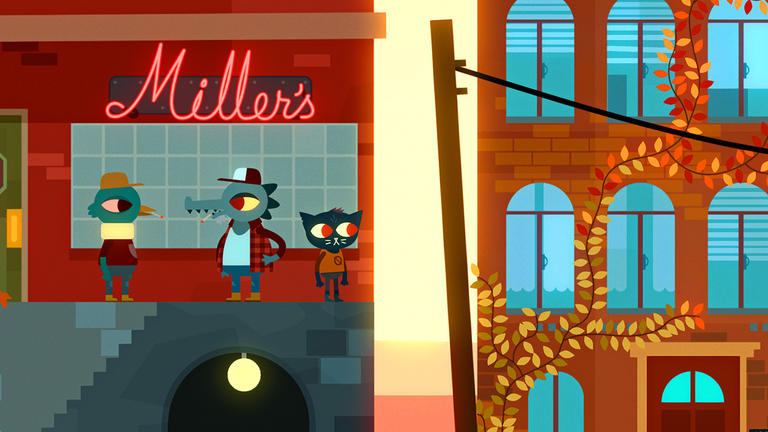
Made with Unity – Night in the Woods by Finji
Create 2D games with Unity
Unity is the world’s most popular 2D and 3D game creation platform – 50% of all mobile games are made with it! New users can download the free version of Unity . You’ll get access to a platform to create 2D games plus an abundance of free resources from us and our awesome community.
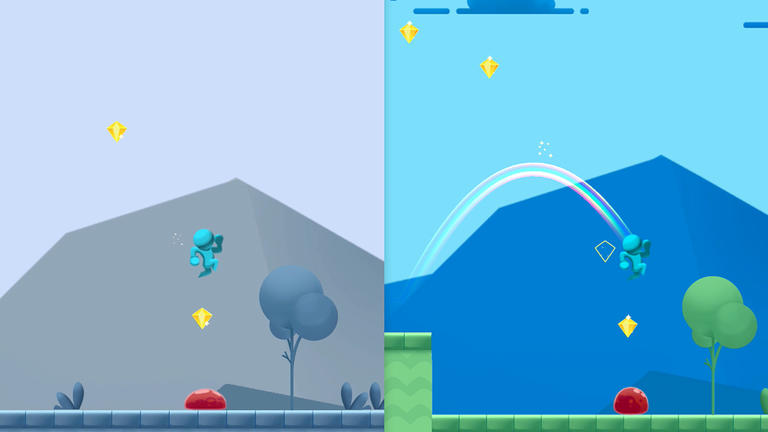
Make a 2D game, in a 2D game
When you download Unity, you have the option to start creating with one of our ready-made Microgames, such as the 2D Platformer . Each Microgame has a collection of Mods – fun customizations that will introduce you to important workflows in Unity.
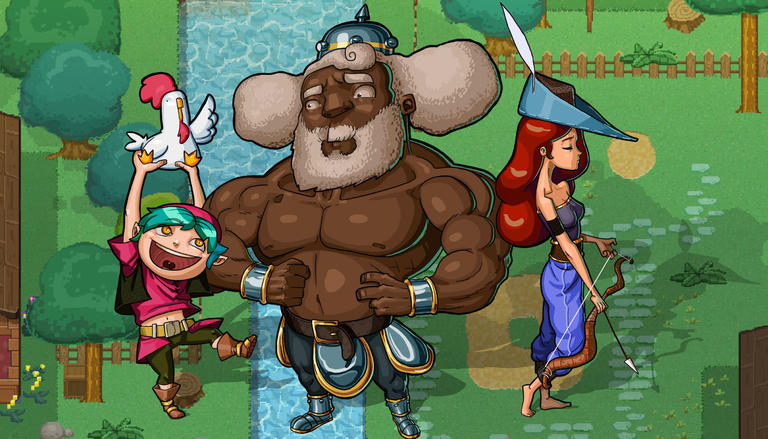
Unity Creator Kit: 2D RPG
Create a 2D RPG in just one hour!
Creator Kits are simple game projects available on Unity Learn that you can make in about an hour. The 2D RPG Kit is code-free, so you can focus on learning about the Unity Editor and customizing the game based on your own ideas and interests.
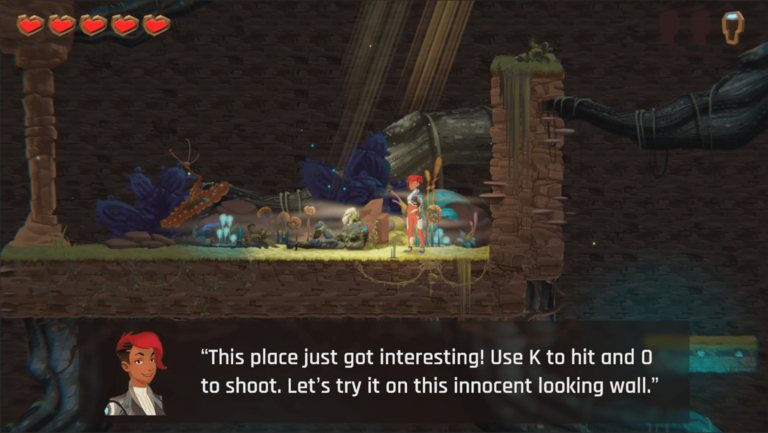
The Explorer: 2D Kit by Unity
Design 2D gameplay
The Explorer: 2D is a collection of mechanics, tools, systems, art and other assets to hook up 2D gameplay. The kit includes a game example built with these systems. You can complete this great project in under two hours, and you don’t have to write any code.
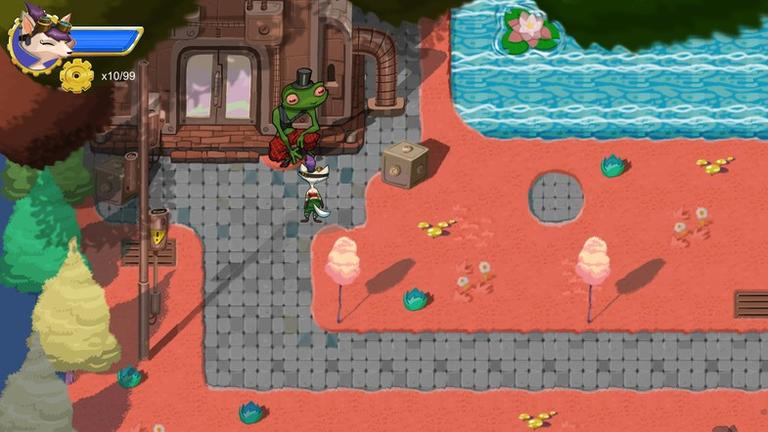
Unity 2D game project: Ruby’s Adventure
Learn 2D tools
Ruby’s Adventure is a project that will guide beginner creators into 2D game development and coding. Ruby’s journey will teach you how – and why – to use sprites, how to create your first script, use the Tilemap tool, decorate your scene, and create particles, user interface (UI), audio and more.
2D tips from the Unity community

Thomas Brush: 2D game dev tips
Thomas Brush's channel is chock-full of practical tips and inspiration. Start with 5 steps to making a gorgeous 2D game and Anyone can make 2D games!

Brackeys: How to make a 2D game
Brackeys is one of the most popular and respected channels for Unity creators. Check out this series on 2D game development in Unity.

Blackthornprod: 2D art and animation tutorials
Blackthornprod creates his own video games and shares tons of tips on his channel. See his tutorials on creating 2D game characters, animation, lights, art and more.
We use cookies to ensure that we give you the best experience on our website. Visit our cookie policy page for more information.

Game Development Studio
Top 2D Game Ideas for Beginners to Make

Making a 2D video game is the perfect starting point for new game developers. Without needing 3D graphics or tons of coding, you can focus on nailing awesome 2D game ideas and making fun projects to build skills. This article suggests 10 easy 2D game ideas for total beginners based on real classics almost anyone can design. We’ll explain examples, art styles, and tips to code core features without pain. If you go step-by-step, you’ll finish your first 2D game feeling like a pro!
Endless Runner Games
Remember 2D game ideas like Subway Surfers, Temple Run, or Canabalt? Those are “endless runners” – where your character dashes left to right automatically and you tap or swipe to jump over stuff in your way.
Making a simple 2D endless runner is smart because:
- Fun and easy to play even if made by beginners
- Very simple controls like one-button jumping or dodging
- Procedural levels means basic building blocks shuffle new challenges continuously
- Easy pixel art since backgrounds scroll fast hiding imperfections
To code an endless runner, first make your character run forever. Then add platforms, obstacles, and powerups that spawn randomly. Polish by fine-tuning speed, how far the player can jump, scoring, sound effects, and making dangers appear smarter over time.
Classic Fixed Shooters
Before moving screens, games like Space Invaders put players on the bottom shooting upward as alien formations marched closer. New examples like Geometry Wars built on that.
Why these basic 2D game ideas in shooters rock:
- No complex twin-stick controls to figure out
- Hypnotic shooting waves of bad guys
- Cool particle effects when baddies explode into pieces
- Old school vector/pixel art style is part of the charm
To develop a fixed shooter, first map out enemy wave patterns that progress in difficulty. Allow shooting 360 degrees. Program different shot speeds, spray angles, and particle colors per weapon. Have baddies explode chaotically!
Basic Platformers

From Mario to Meat Boy, platformers that have you run, jump, and stomp through levels define 2D game ideas.
What makes platformers so fun:
- Pixel-perfect controls feel sublime when mastered
- Nonstop movement over obstacles, pits, and enemies
- Cutesy retro sprites full of character
- Near endless level design creativity
When programming platformers, nail controls first before anything else. Make acceleration and jumping true to physics. Ensure landing animations feel right. Use collision layers, triggers, and boxes to prevent corner-clipping. Have baddies chase or shoot intelligently. Then build hundreds of challenging levels!
Quick guide to basic platformer elements
Core Mechanics :
- Jumping physics
- Combat or enemies
- Collectibles
Level Elements :
- Moving platforms
- Location-based triggers
- Hazards (spikes, lava, etc)
- Puzzle switches
Art Elements :
- Tilesets and backgrounds
- Character animations
- Sound effects
- Dynamic lighting
Brick Breaker Games
In games like Breakout, Peggle, or Arkanoid, players knock a ball into stacks of bricks to clear them all for points.
Why brick breakers hit big:
- Super satisfying feeling wrecking bricks
- Hundreds of unique brick types/effects
- Powerups alter ball behaviors randomly
- Formulaic but continuously challenging
When developing brick breakers, start with vector math for ball speed, angles, paddle rebounds. Generate brick layers by type – some crack differently, others need multiple hits. Implement powerups like lasers, multi-balls, or ghost paddles. Explode bricks in spectacular fashion with particles!
Table of Sample Brick Breaker Powerups
Retro Arcade Games

For starters wary of complex 3D graphics, fake retro pixel art cosmetically suggests classic games without the pain of coding ancient designs exactly.
Why pixel art rocks:
- Masks aging graphics allowing modern flair
- Less need for animation frame perfection
- Evokes warm nostalgic feelings
- Fosters vibrant creativity unshackled by history
When crafting pseudo-retro arcade games, use signature genre motifs players intuitively recognize but filter through unique twists. Exaggerate charming retro console limitations without agonizing over bygone antiquated tech hurdles. Love letters don’t require total authenticity!
Old-School Retro Flair in New 2D Game Ideas
Lots of new 2D indie games use pixel art and mechanics inspired by classics from the ’80s and ’90s. Even with way better tech now, purposefully mimicking old-school limitations helps developers focus creativity. Let’s overview why retro works and name cool recent examples.
Using chunky pixels instead of high resolution art cuts workload. Strict color palettes look iconic too. Retro consoles displayed games on TVs differently than now, so adding fake CRT scanlines nods to that technology feel. This taps player nostalgia to fill gaps since modern games no longer face old tech limits.
Gameplay-wise, many retro genres depend on tight core actions like run, jump, shoot. Minimalist inputs let players master essential skills. But constraints also squeeze innovation – see how 4-player Goldeneye multiplayer emerged from limitations. Keeping signature sensations without coding ancient systems allows benefiting from retro foundations.
Overall, selectively keeping certain old-school constraints when making 2D game ideas today scaffolds creativity through focus, just like artists balance negative space or designers economize mechanics. Does pixelating that waterfall better spotlight explorable caves behind? Can adding a weapon wheel improve combat without overly slowing things down? Limits boost appreciation of what remains.
Some cool modern 2D game ideas with old-school style include:
SImple Game Ideas to Consider
Now, let’s explore some tried-and-true simple 2d game ideas that have stood the test of time:
Platformers
Platformers are some of the most iconic 2d game ideas out there. In a platformer game, you control a character who jumps and runs across platforms, avoiding obstacles and enemies along the way. Classic examples include Super Mario Bros., Sonic the Hedgehog, and Mega Man.
To create your own platformer, you could come up with a unique character and world setting, design challenging levels with tricky jumps and puzzles, and incorporate power-ups or special abilities to help your character along their journey.
Puzzle Games
Puzzle games are another excellent choice for 2d game ideas. These types of games challenge players to solve brain-teasers, match patterns, or strategically manipulate objects on the screen.
Some popular puzzle game concepts include match-3 games like Bejeweled or Candy Crush, sliding block puzzles like Huarong Trail or Klotski, and physics-based games like World of Goo or Cut the Rope.

When developing a puzzle game, focus on creating addictive gameplay mechanics and progressively increasing the difficulty to keep players engaged.
Side-Scrollers
Side-scrolling games, also known as “run and gun” games, are a classic genre of 2d game ideas. In these games, the camera follows the player character as they move horizontally across the screen, shooting enemies and navigating through levels.
Famous side-scrollers include Contra, Metal Slug, and Gunstar Heroes. To create your own side-scroller, you could design a unique post-apocalyptic world, equip your character with cool weapons and power-ups, and fill your levels with challenging enemies and obstacles.
Fresh 2D Game Ideas to Explore
While the classic genres are always a solid choice, there’s also plenty of room for innovation when it comes to 2d game ideas. Here are some fresh concepts to consider:
Narrative-Driven Adventures
Combining elements of puzzles, platforming, and storytelling , narrative-driven adventures can be incredibly immersive and engaging 2d game ideas. Games like Gris, Inside, and Limbo are excellent examples of this genre, using minimalistic visuals and environmental storytelling to captivate players.
To create your own narrative adventure, focus on crafting a compelling storyline, designing atmospheric environments, and incorporating puzzles or challenges that complement the narrative.
Roguelikes are a genre of games that feature procedurally generated levels, permadeath mechanics (meaning you start over from the beginning when you die), and a heavy emphasis on exploration and resource management.
Popular roguelikes like Enter the Gungeon, Dead Cells, and Rogue Legacy have found success by combining these elements with fast-paced action and intricate combat systems.
When developing a roguelike, focus on creating a balanced risk-reward system, designing varied enemy types and loot, and ensuring that each playthrough feels fresh and challenging.
Metroidvanias
Metroidvania simple 2D games are a subgenre of action-adventure games that feature a large, interconnected world to explore, with new areas and abilities becoming accessible as the player progresses.
Games like Ori and the Blind Forest, Hollow Knight, and Guacamelee! have captivated players with their beautiful pixel art aesthetics, challenging platforming sections, and rewarding exploration mechanics.
To create a compelling Metroidvania, focus on designing a cohesive and interconnected world, implementing a satisfying progression system with new abilities or power-ups, and encouraging backtracking and exploration through clever level design.
Tips for Bringing Your 2D Game Ideas to Life
Now that we’ve explored some awesome 2d game ideas, here are a few tips to help you turn your concept into a reality:
Start Small
It’s easy to get carried away with grandiose ideas, but it’s often better to start small, especially if you’re new to game development. Begin with a simple concept and focus on nailing the core gameplay mechanics before expanding further.
Learn Game Development Basics
While you don’t need to be a programming whiz to create 2D games, it’s helpful to have a basic understanding of game development concepts and tools. Consider taking an online course or following tutorials to learn a game engine like Unity or GameMaker Studio.
Gather Inspiration
Don’t be afraid to draw inspiration from your favorite games or other media. Look for elements that you enjoyed and try to incorporate them into your own unique vision.
Playtest and Iterate
As you’re developing your game, make sure to playtest it regularly and gather feedback from others. Use this feedback to refine and improve your game, making adjustments to mechanics, level design, or difficulty as needed.
In closing, use inspired bits of retro style and mechanics without complete devotion. Suggest classics rather than 100% recreate. Give modern game design a nostalgic filter. Players want great worlds and feelings, not tech museums! Capturing timeless enjoyment through focused design shines any coating.
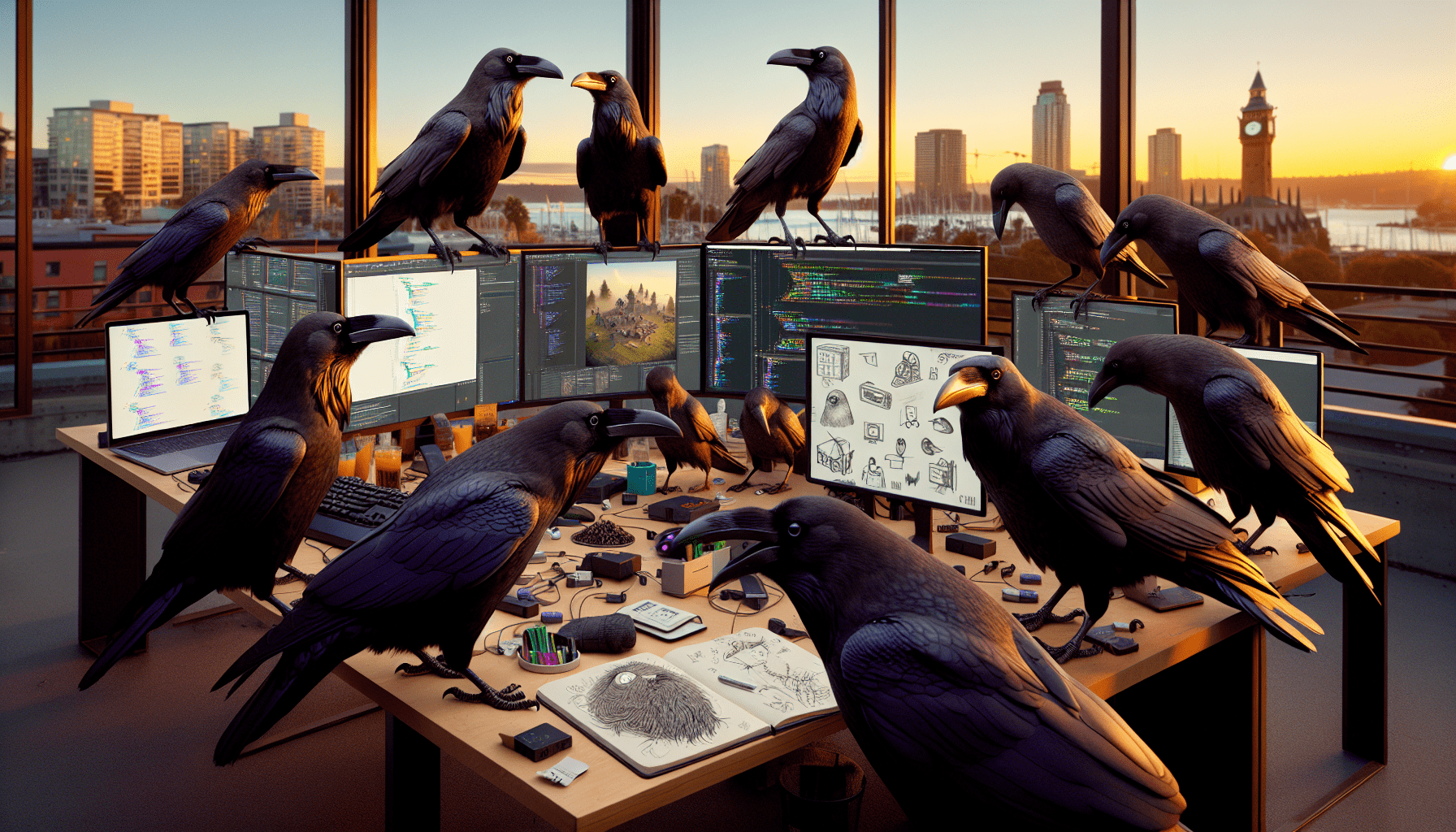
I give consent to processing my personal data given from the contact form above under the terms and conditions of EJAW Privacy Policy
I want to receive commercial commuications and marketing information from EJAW by electronic means of communication (including telephone and e-mail)
The Best 2D Games On Steam
Steam has seen a lot of awesome 2D games over the years. Here's a look at the very best, according to Metacritic score.
- Sea Of Stars is a top-down turn-based RPG that pays homage to classic Super Nintendo RPGs like Chrono Trigger and Super Mario RPG. It features stunning pixel art and an engaging storyline.
- Vampire Survivors is a fast-paced roguelike game where you must survive in a monster-infested world. With endless hours of content and unique runs, it offers satisfying gameplay and exploration.
- Terraria is like a 2D version of Minecraft, with a procedurally generated world and endless opportunities for crafting, building, and fighting monsters. The 16-bit art style and controls make it an immersive sandbox adventure.
To many people, there's nothing better than a good 2D game. They're unique, exciting, and, more often than not, incredibly adventurous. Sure, they may be lacking a little in the depth department compared to their 3D counterparts, but they more than make up for it with their beautiful visuals, stunning storylines, and marvelous mechanics. What's more, there are countless to choose from on Steam .
RELATED: The Best Free Video Games You Can Play On Steam
For all the wonderful 2D games out there, though, some set themselves apart from the rest. They're the ones that you can never forget and often end up going back to time and time again. Simply put, these games are two-dimensional masterpieces and a must-play if you want the best 2D games on Steam.
Updated on September 16, 2023, by PJ Molloy - It's a great time to be a fan of 2D games. The past two years saw an incredible lineup of innovative, engaging 2D games across all platforms, especially Steam. 2D games never go out of style, and if you have a Steam account, you're never going to run out of high-quality 2D titles.
3D games may have bigger budgets and fancier graphics, but the latest 2D games on Steam prove that so much content and fun can be provided with just two dimensions. With the hype surrounding big 2D titles like Sonic Superstars , now is the perfect time to get caught up with the best 2D games on Steam.
25 Sea Of Stars
If you're a fan of classic RPGs from the Super Nintendo era, then Sea Of Stars is a dream come true. It's a top-down turn-based RPG with an art style, story, and gameplay reminiscent of legendary retro RPGs like Chrono Trigger and Super Mario RPG.
The gameplay includes many quality-of-life updates to the classic Super Nintendo RPG format, so you can say goodbye to random encounters and grinding. The pixel art is stunning , and the story provides plenty of laughs, heartwarming moments, and surprising twists.
24 Dave The Diver
Dave The Diver is a nice blend of exploration-based adventure, management simulation, and RPG elements. You play as Dave, a diver by day and restaurant owner by night. The goal is to explore the sea, complete quests, and collect fish for his sushi restaurant.
The game has you craft items and gear Dave can use during expeditions. When you have everything you need, you plunge into the ocean's depths to find secrets, avoid sharks, and fight bosses. You manage the restaurant at night, designing the place and discovering new recipes to attract more customers. The pixel art is beyond charming and perfectly complements this quirky 2D game.
23 Vampire Survivors
There's nothing more satisfying than mowing down hoards of monsters. Vampire Survivors is a roguelike where you must fend for yourself in a monster-infested world. The goal is to survive as long as you can. The longer you live, the more characters, items, and relics you unlock.
While you defeat countless enemies, you can explore the world, find secrets, and gain experience points to refill your health or acquire new powerful items. The gameplay is fast-paced and action-packed, and since every run is different, Vampire Survivors offers endless hours of content.

22 Guilty Gear Strive
This action-packed 2D fighting game has rave reviews and won Best Fighting Game at The Game Awards 2021. Guilty Gear Strive is visually stunning with gorgeous 2.5D cell-shaded graphics and fast-paced, intense combat.
This game is an absolute joy to play and really rings true to its predecessors while being a little more beginner-friendly than other Guilty Gear games. The controls are relatively easy to get used to, and the anime art style is breathtaking. If you're a fan of 2D fighting games, then give this one a shot.
21 Super Meat Boy
Many consider Super Meat Boy the game that started the indie revolution by providing inspiration and confidence to hoards of would-be developers. It's also famous for being one of the hardest games on Steam .
It might not look very difficult at a glance, but completing a stage of Super Meat Boy can take countless attempts due to the devilish placement of the many deadly obstacles. Thankfully, the game's stellar controls are some of the tightest to have ever been featured in a video game. With enough practice and perseverance, you should be able to beat this fantastic 2D game and come away with a real sense of achievement.
Inside follows a small boy who finds himself at the center of a dark project. He must escape, keep his head down, solve puzzles, and try not to become like the strange zombie people around him.
Inside is one of the best 2D games on Steam, mainly due to its intriguing visuals, beautiful soundtrack, and unsettling atmosphere. It's a joy to play despite its creepy look. At its core are interesting puzzles and horror-based platforming that will engage, shock, and enthrall until the very end.
19 Rimworld
Promoting itself as a sci-fi simulation perfect for fans of Firefly, Dwarf, and Dune, Rimworld is a management simulator where you build, manage, develop, and watch simply drawn characters live their lives in this interesting world.
Hours will fly by as you fully immerse in this adorable game. The beautiful soundtrack is a treat for the ears, and the easy play style allows you to sit back and enjoy yourself. Since each playthrough is unique and exciting, it’s no wonder why it's one of the best 2D games on Steam.
18 Hollow Knight
Hollow Knight is a modern classic, perfectly blending classic Metroidvania gameplay with a gorgeous Tim Burton-esque setting. The hand-drawn art style is enough to qualify it as one of the greatest 2D games on Steam.
Hollow Knight is a stunning platformer with music that soothes the soul and a stunningly eerie atmosphere that'll send goosebumps up your arms. You explore the ruins of a fallen kingdom, find secrets, unlock new abilities, and investigate the mysterious lore hidden in these spooky caverns. If you like 2D platformers, you owe it to yourself to try this one.
17 Baba Is You
Baba Is You came out in 2019 and has been widely beloved ever since. It's an abstract puzzle game where you push blocks around the environment to overcome various obstacles. The twist? Each block is a rule. By changing them around, you can literally change the rules of the game.
RELATED: The Best Puzzle Games On Steam
It's hard to get bored with Baba Is You. There are more than 200 levels, and you'll be engrossed by all of them. If you need more proof of its excellence, look no further than the many awards it has won over the years, including Excellence In Design, the Nuovo Award at the Independent Games Festival, and the IndieCade Europe Choice Award.
16 Terraria
Imagine if Minecraft was a 2D game. That's Terraria in a nutshell. This open-world sandbox 2D game allows you to explore a procedurally generated world, craft, build, and fight monsters to your heart's content.
It isn't just the premise that proves Terraria is worth playing - it's the mods, the gorgeous 16-bit art style, and the controls that will win over anyone interested in a 2D sandbox adventure. You can get lost in Terraria, and because of the many updates, you'll never run out of things to do, bases to build, and bosses to fight.
15 Ori And The Blind Forest
Were it not for the success of other independent games like Castle Crashers and Limbo, the world may have never been blessed with Moon Studios' fantastic debut title: Ori and The Blind Forest . This beautiful Metroidvania is the perfect blend of heartwarming storytelling and exploration-based platforming.
This game is one of the most visually impressive of its decade, with bright colors and individually crafted backgrounds offering up a real treat for the eyes. The gameplay emphasizes finding secrets, collecting items, and unlocking abilities, ensuring there's always a new surprise to keep the experience fun and engaging.
With over one million copies sold and countless award nominations, Celeste is one of the greatest indie-game success stories ever. It's a 2D platformer that follows Madeleine as she attempts to climb the intimating Mount Celeste. The story is a tasteful metaphor for anxiety and depression, making for one of the most beautiful stories on Steam.
The jaw-dropping 8-bit art style ensures that every screenshot you take is gorgeous enough to hang on your wall, and the vivid colors bring the game's backdrops to life. The game controls well, features a wonderful soundtrack from Lena Raine, and provides plenty of challenges without feeling unfair.
Similar to Inside, Limbo is a dark and creepy puzzle platformer with moody lighting and spooky areas to explore. You never know what's hiding around the corner as you venture through the woods, leading to many surprises that never fail to send a chill up your spine.
It's the type of game where you will die on multiple occasions, but it never feels unfair or frustrating. It may require a few playthroughs to really figure out the game’s mysterious lore, but it’s still a unique and enjoyable 2D game.
Cuphead is a run-and-gun game with plenty of quirky platforming levels and memorable boss fights. The game is famous for its immense difficulty, but it's incredibly rewarding when you finally succeed. It's perfect if you're up for a nice challenge.
What makes this one of the best 2D games on Steam is how beautiful and well-made the visuals are. The creators used the same animation techniques as cartoons from the 1930s. The traditional hand-drawn animation, watercolor backgrounds, and original swing soundtrack fit the era to a tee. If you like 2D platformers, you won't want to miss this. Just make sure you play with a controller .
11 Ori And The Will Of The Wisps
Published by Xbox Game Studios, Ori And The Will Of The Wisps is the sequel to Ori And The Blind Forest and lives up to the hype. What might initially attract you is the stunning visuals. It's calming, beautiful, and will enchant anyone playing.
RELATED: The Best Single-Player Games On Steam
However, it isn't just the visuals that make this title deserving of being one of the best 2D games. The game is emotional and will leave you feeling empowered and needing a few tissues. If you're looking for a heartwarming, engaging experience, look no further.
10 Guacamelee
When it comes to Metroidvania-style platformers, they don't come much better than Guacamelee. It may not provide much length, but it more than makes up for this with its tight combat, excellent soundtrack, eye-catching visuals, and fantastic humor sprinkled throughout the game that will keep you laughing from start to finish.
The Super Turbo Championship Edition is undoubtedly the best way to experience Guacamelee. While the sequel adds a lot of quality-of-life improvements, nothing beats the original. If you like comedic games, especially ones with a lot of puns, then this quirky 2D game is right up your alley.
9 Stardew Valley
Stardew Valley is an extremely well-known game unlike any other. This is a relaxing farming simulator with secrets, twists, and a variety of stories everywhere you look. It tells the tale of an office worker unhappy with their life. When they inherit their grandfather's farm, they run off to live a new, more nature-filled life.
You can raise animals, grow crops, explore the mines, and start a family. There's even a ton of post-game content to ensure you're entertained for hours. If you're looking for a cozy game on Steam to help you relax after a long day, Stardew Valley is the way to go.
This 2D base-building game might look simplistic at first glance, but there's so much to do. Factorio is a construction and management simulator where you're trapped on an alien planet and must gather resources to build an escape rocket. You can even grab a friend for co-op.
One of the best aspects of Factorio is the wide range of mods available. They spice the game up a little if you need a break from the base gameplay or just want to make your life a little easier.
7 World Of Goo
World Of Goo is a physics-based puzzle game that'll put your brain to the test. The goal is to use orbs of goo to build bridges that help you reach the end of the stage. The catch is that you need to use as little goo as possible, creating a nice challenge to get the gears turning in your mind.
The game's silly humor, quirky characters, and cartoonish art style never fail to put a smile on your face while you navigate the many clever puzzles. Its cozy and humorous tone makes it an excellent choice for a more casual 2D game on Steam.
This time-bending, reality-altering 2D puzzle platformer will keep anyone's mind working at full speed. The goal is to solve puzzles by manipulating time, with new surprising twists around every corner. Even the story has a shocking twist you won't want to miss.
RELATED: The Best Cozy Games On Steam
Braid has an interesting style that isn't seen in many 2D games. It's drawn in a painterly style, which is both awesome to look at and extremely unique. The best thing about Braid is how forgiving it is. If you don't like or can't figure out a puzzle, you can simply move on and solve it later.

The 14 Best 2D Games on Steam
2D Games are deceivingly hard to make. Although indie developers often use pixel art due to budget constraints, it is also a way to evoke familiarity and a valid art style regardless of nostalgia.
However, many people don’t realize how much work it is to provide high-quality 2D animation for a game. It is often more troubling than using 3D graphics.
Whether you like pixel art, hand-drawn graphics, anime-like visuals, or well-animated games in general, there’s plenty to enjoy in 2D graphics.
With that in mind, I’ve compiled a list of some of the best 2D games on Steam. Whether you like platformers, roguelikes, or just straight-up good games, there should be something on this list to give you hours of entertainment.
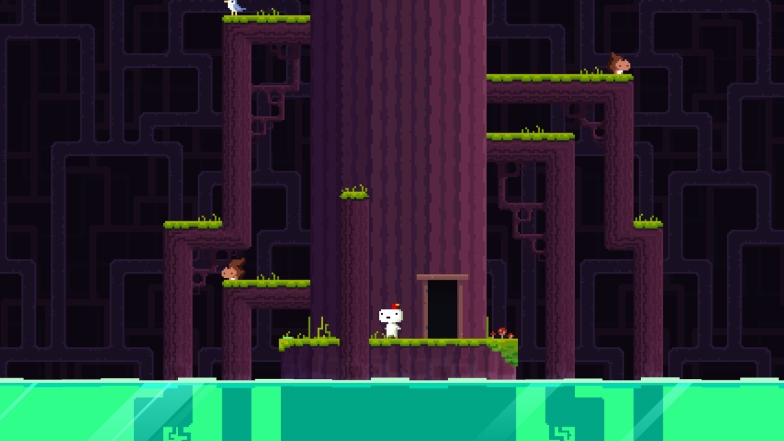
Fez is a charming platformer with a unique visual style. The game world is presented as a 3D environment but is actually a 2D plane that you can rotate to view from different angles.
This mechanic is used to solve puzzles and reach new areas. The game also has a great sense of humor, and the soundtrack is excellent.
In this game, you play as a normal 2D guy named Gomez. When the existence of a strange third dimension is disclosed to him, Gomez is dispatched on a trip that will lead him to the edge of creation.
Now, he will have to navigate 3D constructions from four separate traditional 2D viewpoints. Throughout his adventures, you will discover an open-ended, peaceful universe filled with mysteries, puzzles, and hidden treasures. Investigate historical riddles to learn the truth about reality and perception.

Cuphead is a modern run and gun action game inspired by cartoons of the 1930s. The visuals and audio are painstakingly created with the same techniques of the era. In other words, buckle up for traditional hand-drawn animation, watercolor backgrounds, and original jazz recordings.
Although the game has stages with some platforming and side-scrolling, Cuphead is mostly a boss rush game. There are a total of 28 bosses to defeat.
Each boss has a unique attack pattern and a distinct personality. The game can be played alone or with a friend in co-op mode.
This game is a must-play for those who want something more challenging than most current games. Although it is a beautiful and somewhat cute-looking game, Cuphead is not an easy game, and it can often be rage-inducing.
That said, the way it looks, the music, and the game’s tight controls make it very fun trying to dodge around all these difficult levels while fighting off enemies at the same time.
Ori and the Will of the Wisps
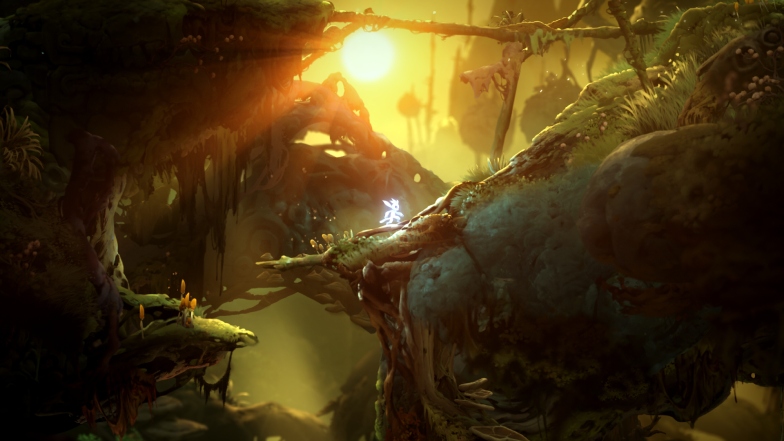
Ori is an artistic game with fun, addictive gameplay that surprises you by becoming better and better the more you play. There is something about the way the main character looks and the dangers of the world that makes you want him to be safe.
Although Ori, the small spirit, has already encountered numerous challenges in the previous game, his adventures have not come to an end yet. Now, Ori must help Kun, the small owl, and learn about his destiny.
In this new adventure, it will take more than bravery to put a family back together, mend a broken nation, and learn Ori’s ultimate purpose.
The gameplay does not disappoint. Ori will explore a massive world filled with new allies and enemies brought to life by breathtaking hand-painted artwork.
The combat and movement have been improved, reaching a level of mechanical fun that I was not expecting when I first played this game.
Hollow Knight
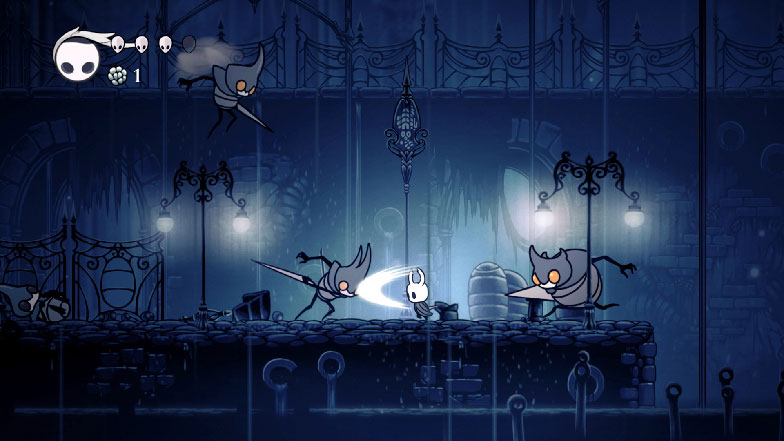
Hollow Knight is special in many ways. The art style is haunting and cute at the same time, the animation is impressive, the enemy variety is significant even though the art is minimalistic, and the gameplay is beyond fun.
There is a level of polish and love in Hollow Knight that I was able to sense since I saw this game for the first time. In this game, you play as a tiny insect who visits an ancient, ruined, underground kingdom beneath the dying city of Dirtmouth.
The more you explore, the more you find out about the main character’s origins and how the world of Hollow Knight operates.
There are many mysteries, sad stories, and interesting characters that don’t have to say much for you to understand their motivations, actions, and endings.
As a game, Hollow Knight is a complete package.
The artistic side is fantastic, but so is the technical side of the game.
When it comes to gameplay, Hollow Knight provides a very enjoyable Metroidvania experience with tight controls, exciting battles, fun platforming, and challenging exploration.
Darkest Dungeon
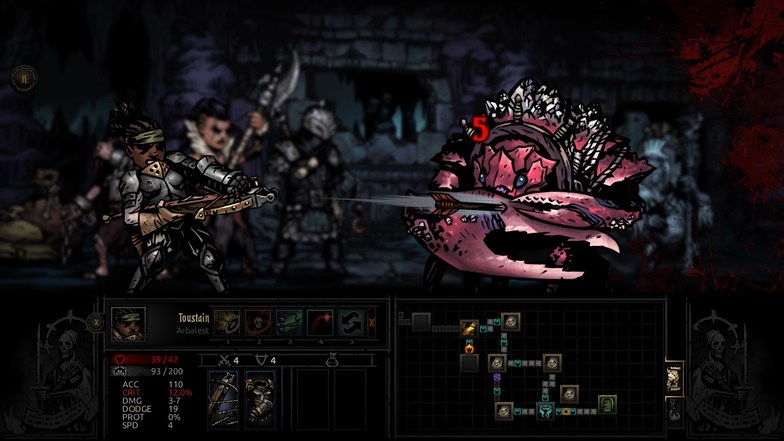
Darkest Dungeon was a hit, and it now has a sequel. This game is a difficult, turn-based, Gothic role-playing game about the emotional strains incurred throughout long journeys where you face Lovecraftian scenarios.
Lead a group of imperfect heroes through corrupted woodlands, abandoned labyrinths, forgotten crypts, and beyond by recruiting, training, and equipping them. You will struggle against unimaginable foes as well as stress, hunger, illness, and growing darkness.
With the help of your heroes, solve intriguing mysteries and engage in creative turn-based strategic warfare against a range of terrifying creatures.
There’s something addicting about Darkest Dungeon’s gameplay. Perhaps it’s the way the game never lets you feel too comfortable. It always forces you to push your party to their limits and make every decision count.
It can also be the sense of progression you get from watching your heroes slowly grow in power as they overcome the game’s many challenges. Whatever the reason, Darkest Dungeon keeps you coming back for more.
Streets of Rage 4
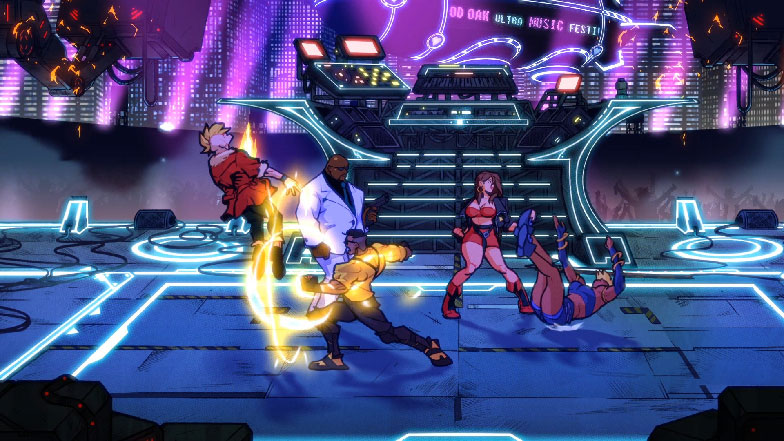
One of the best things about Streets of Rage 4 is that it’s a love letter to the fans of the series. It takes everything that was great about the originals and modernizes it for a new audience.
The graphics are gorgeous, the gameplay is tight, and the soundtrack is killer. This is one brawler that you definitely don’t want to miss. After all, there’s nothing quite like picking up an enemy and hurling them into another enemy in order to score more points.
Streets of Rage 4 proves that side-scrolling Beat ’em Ups are still fun. The characters feel very different from one another, attacks are super satisfying to land, and the game has beautifully hand-drawn graphics and tight controls.
If you didn’t play the older games of the franchise but are familiar with classics like Final Fight or River City Ransom, you’ll feel right at home. If you did play the older Streets of Rage, I’m sure you’ll love it.
However, you don’t need to be a fan of old-school games to enjoy Streets of Rage 4. The gameplay is more than enough quality content for you to enjoy this modern take on Beat ’em Ups.
Rivals of Aether
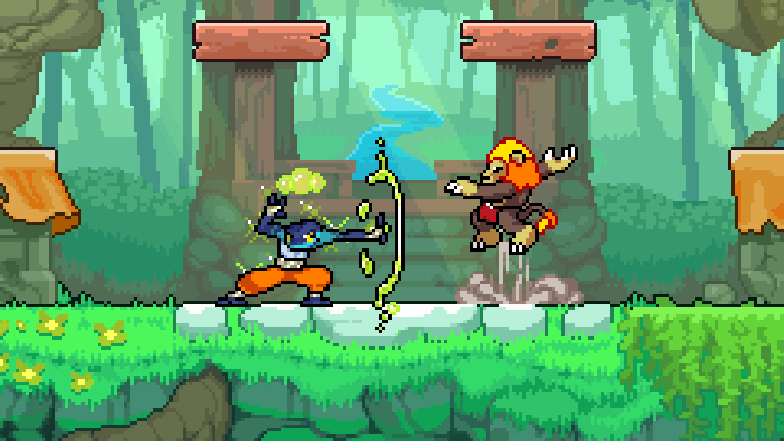
This game was made by fans of Super Smash Bross, but it ended up becoming its own thing.
Rivals of Aether is a fantastic platform fighter with pixelated graphics that has passionate devs and a dedicated community. In many ways, this will remind people of Brawlhalla and Super Smash.
This platform fighter takes place in a universe where civilizations battle one another by calling upon the might of Fire, Water, Air, and Earth. Select a rival to bring to the combat and control their movement and elemental abilities.
Bring your combat abilities online to compete against people from around the world. Unravel the enigmatic conflicts on the planet Aether in Story Mode, team up with friends to battle ghastly monsters in Abyss Mode, and explore the mysterious conflicts on the planet Aether.
If you think that Rivals of Aether is just a Smash clone, please make sure to try this game so you can see how wrong you are.
Street Fighter and Mortal Kombat are both traditional 2D fighters, but they are completely different from one another.
Rivals of Aether has unique gameplay, art style, and it now has Ori.
Azure Striker Gunvolt
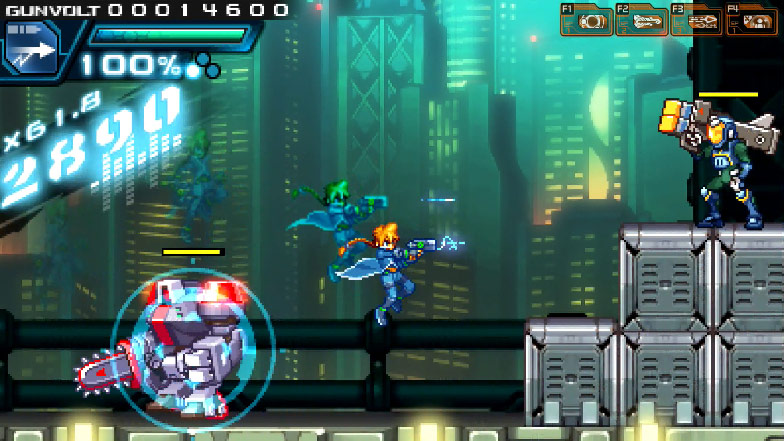
Azure Striker Gunvolt was a pleasant surprise for me because this is an excellent shooter. This game follows the Mega Man formula but also innovates and adds to it as much as possible. In many ways, the game feels like a spiritual successor to the Mega Man Zero series.
In this game, you take the role of Gunvolt, a young hero with electric powers who is fighting terrorists that hunt normal humans.
Although he has the ability to discharge incredible amounts of electricity from his body, Gunvolt needs a nail gun that helps him direct lighting rays to his enemies.
Each stage is a different jump and shoot challenge with a boss in the end, much like any Mega Man game.
The game is very, very anime. If that’s not your cup of tea, you might not enjoy Gunvolt as much.
The story is filled with Moe scenes, cute moments, j-pop, and many other anime tropes. However, you can also do like I did and skip most of the story to experience the gameplay itself, which is by far the best part of the game.
If you enjoy this game, you will be pleased to know that it only gets better.
This game got a sequel and a spin-off; both have an additional character with a completely different gameplay style that is just as fun. In fact, I’d argue that some people will like the other character even more.
Mega Man X Collection
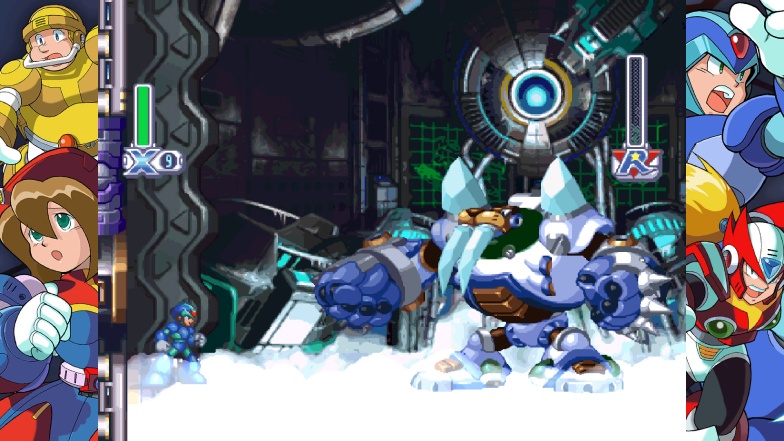
Mega Man X is a game that symbolizes the passage of the blue bomber to the new generation consoles of that time. X, the new main character of the Mega Man series, was a new kind of robot who could think for himself and was used to create an entirely new type of robot.
Reploids, the ones made by copying the technology used to develop X, were all self-aware robots that could make their own decisions. Since reploids had different opinions, much like humans, they also started fighting each other, much like humans.
Mega Man X takes a more serious approach to its story.
The tone of the game is quite darker. It takes place in a dystopian future, making X’s adventures very different from its predecessor’s.
The game evolved in other aspects too. Although the gameplay mostly looks similar, X gained new movement tools. For instance, he got a dash and wall jump, making stages much larger and the combat much more frantic.
All those things combined make the Mega Man X series some of the best platform, jump & shoot games ever made. Even to this day, you can return to the old SNES classics and have a blast.
Mega Man X is a masterclass on seamless tutorials and adding new mechanics to an old formula that only improves up to Mega Man X 3. This collection includes some of the greatest 2D titles you’ll ever play.
Dust: An Elysian Tail

There’s something odd in Dust: An Elysian Tail that keeps you coming back for more right away. There’s a constant sadness and mystery throughout the plot that doesn’t quite match the cute, anthropomorphic graphics at first.
However, the more you play and get used to what you see, the more you appreciate every single choice made by the developer.
This game is a work of art from beginning to end.
The way it delivers the story, its themes, and even how the animation is drawn puts this game on a whole new level. You can only achieve this kind of visual beauty with a 2D hand-drawn game.
As for the plot, you play Dust, a mighty warrior with a heart of gold who is not afraid to do what it takes to end the evil that spreads around the world.
Since Dust doesn’t remember his past, he is assisted by the little Fidget and the speaking Sword of Ahrah, who can turn anyone into an unstoppable fighter.
Dust: An Elysian Tail is an open-world Metroidvania.
In this game, you will discover ancient mysteries and formidable upgrades buried across the vast, open world as you battle to understand your own past. You will also fight dozens of foes at once with an easy-to-learn, hard-to-master combat system, do side quests, and uncover Dust’s past.
Castlevania Advance Collection
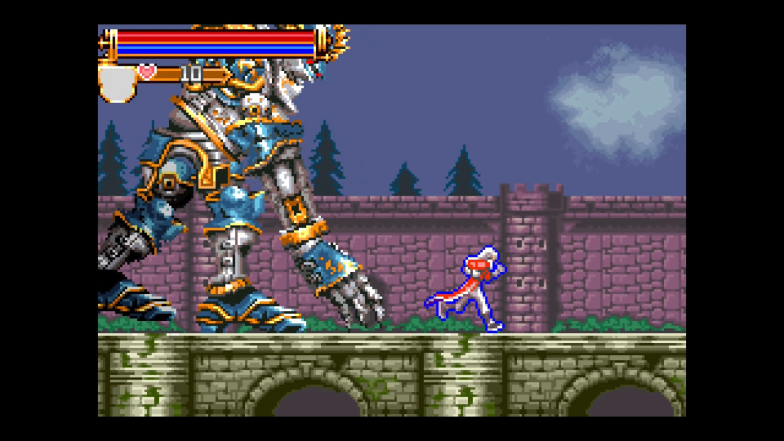
I often recommend this collection, but that’s because I have a good reason to do so. It has some of the best Game Boy Advance Castlevania games, which also happen to be some of the best side-scrolling Castlevania games ever made.
The collection includes Circle of the Moon, Aria of Sorrow, Harmony of Dissonance, and Dracula X. All are Metroidvania games, except for the last one. They are all good games, making it really hard to pick one. Besides, if you consider they all came out for a handheld console, the graphics and gameplay are pretty impressive.
I particularly love that you have a side scroller adventure, Dracula X, among the Metroidvania games in this collection. There’s something comfortable about having a gave in which you just have to memorize enemy patterns and move forward.
I also like the fact that Circle of the Moon is a Metroidvania that is more like Metroid than Symphony of the Night. In other words, you do have upgrades and a world to explore, but you don’t have to worry about gathering experience points and defeating all enemies in the room.
Although monsters might drop good items in this game, you don’t usually have to keep going in and out of a room to get a single important drop as you might have to do in other games of the franchise.
However, if that’s what you like, Harmony of Dissonance and Aria of Sorrow will have plenty of grinding and leveling up for you to do. There’s no doubt in my mind that you will be pleased with this collection if you enjoy 2D Castlevania games.
Dungeons & Dragons: Chronicles of Mystara
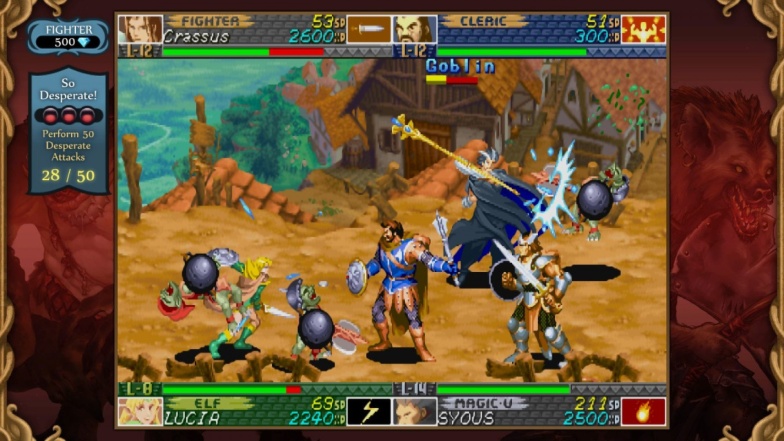
Dungeons & Dragons: Chronicles of Mystara combines two classic arcade games, Dungeons & Dragons: Tower of Doom and Dungeons & Dragons: Shadow over Mystara, into one HD package.
There are many different characters for you to choose from, each with their own unique abilities and playstyles. The game features many different stages with challenges and secrets to discover. With gorgeous hand-drawn graphics and tight controls, Chronicles of Mystara is a must-play for any fan of 2D action games.
Let’s be honest here; you are probably buying this game to play Shadow over Mystara. Yes, Tower of Doom is fun, but Shadow over Mystara is on a whole new level. This Beat’em Up is incredibly hard, like most Arcade games of its time, but it becomes much easier to handle in a PC version since you won’t have to spend all your coins to beat the first bosses.
All that aside, Shadow over Mystara has some of the best pixelated graphics in the Beat ’em Up genre. On top of that, you can feel how much the developers seem to love their creation and the source material.
The game is as close to old-school D&D as it can be. The devs distanced themselves a bit from their Japanese roots. They tried to make an experience that would be fun and memorable to the 90’s kids who played D&D, resulting in a must-play classic that is equally fun to RPG geeks and Beat ’em Up fans.
Final Fantasy VI
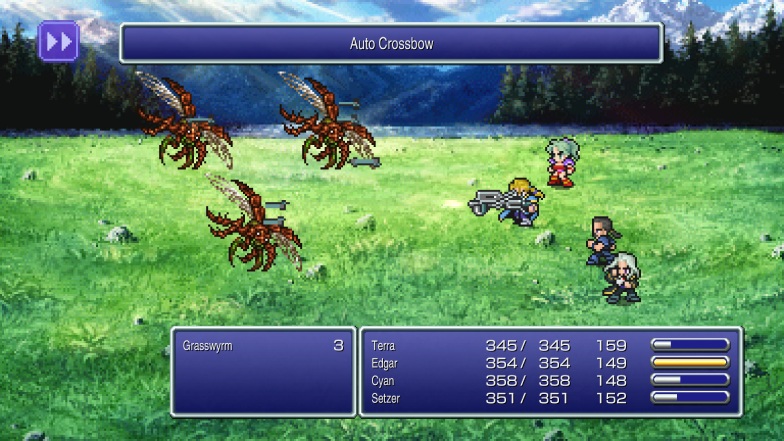
There is no way I’m not adding my favorite SNES Final Fantasy to this list.
There are a lot of things that make Final Fantasy VI one of the best 2D games on Steam. For starters, the story is amazing. It’s a classic tale of good vs. evil, with a group of unlikely heroes banding together to save the world from a powerful villain.
However, it’s so much more than that.
Final Fantasy VI tackles many complex themes such as depression, abuse, adulthood, the meaning of life, and how to deal with defeat. It was undoubtedly an experimental game that paved the way that allowed Final Fantasy VII to exist.
The characters are all incredibly well-developed, and the dialogue is top-notch. You will be surprised how much one can care about a few pixels that don’t have voiced lines. Plus, the game features some of the best music in the series.
As for the graphics, they are great for a 2D RPG game, and the gameplay is somewhat traditional for the genre. Yet, it uses an Active Time Battle system, like the one in Final Fantasy VII, and each character has unique abilities.
If you’re looking for an amazing 2D JRPG game to play on Steam, Final Fantasy VI is definitely worth checking out.
Blasphemous
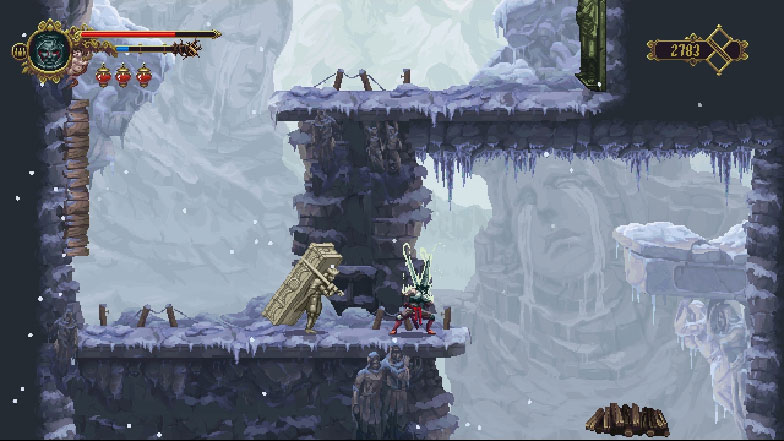
A beautiful, dark, and gothic Metroidvania that will have you coming back for more. In Blasphemous, you take control of the Penitent One, a former member of the Brotherhood of Silent Sorrow.
This Brotherhood is a group of people who have made a vow of silence as a kind of penance, hence the name of the congregation, of which The Penitent One is the sole survivor.
The whole Brotherhood was excommunicated due to a prior transgression or some other form of disagreement with the Church. Although the specifics of this transgression are unclear, it likely has something to do with the Penitent One’s quest to find the Cradle of Affliction.
With stunning hand-painted pixel art and fast-paced combat, Blasphemous is a must-play for any fan of the genre.
The game mechanics are simple but solid, the world is hauntingly beautiful, the bosses are unforgiving but fair, and there’s so much content to explore.
This is one of those games that choose pixeled visuals for artistic reasons. The animations and graphics are seriously stunning. They seem like something older games would never be able to achieve while looking somewhat nostalgic to those who grew up playing pixel games.
- The 11 Best Relaxing Games on Steam
- The 10 Best Ninja Games on Steam
- The 10 Best Hunting Games on Steam
- The 11 Best Survival Games On Steam
- The 12 Best Side Scrolling Games on Steam
- The 10 Best Fantasy Games on Steam
- The 11 Best Adventure Games on Steam
- The 5 Best Battle Royale Games on Steam
- The 13 Best Underrated Steam Games
- 9 Best City Building Games on Steam
- The 13 Best Sniper Games on Steam
- The 13 Best Superhero Games on Steam
- The 16 Best Off-Road Games on Steam
- The 15 Best Action Games On Steam
- The 12 Best Party Games on Steam
- The 11 Best Single-Player Games On Steam
- The 22 Best Sci-Fi Games on Steam
- The 16 Best Horror Games on Steam
- The 10 Best Local Co-op Games On Steam
- The 10 Best Medieval Games On Steam
- The 10 Best Online Multiplayer Games On Steam
- The 11 Best Horde Mode Games on Steam
- The 14 Best Detective Games on Steam
- The 12 Best Kids Games on Steam
- The 14 Best Drifting Games on Steam
- The 20 Best Space Games on Steam
- The 21 Best Japanese Games on Steam
- The 17 Best Bowling Games on Steam
- The 9 Best FPS Games on Steam
- The 10 Best Platformer Games on Steam
- The 10 Best Roguelike Games on Steam
- The 5 Best RTS Games on Steam
- The 12 Best Horse Games on Steam
- The 22 Best Third Person Games on Steam
- The 19 Best Retro Games on Steam
- The 16 Best Hack and Slash Games on Steam
- The 12 Best Building Games on Steam
- The 12 Best Educational Games on Steam
- The 16 Best Indie Games on Steam
- The 15 Best Golf Games on Steam
- The 13 Best Racing Games on Steam
- The 20 Best JRPGs on Steam in 2023
- The 20 Best Metroidvania Games on Steam
- The 18 Best Sports Games on Steam
- The Best 21 Otome Games on Steam
- The 22 Best Mystery Games on Steam
- The 17 Best Board Games on Steam
- The 26 Best Story-Rich Games on Steam
- The 22 Best Zombie Games on Steam
- The 46 Best Casual Games on Steam
- The 10 Best God Games on Steam
- The 15 Best Loot Games on Steam
- The 20 Best Puzzle Games on Steam
- The 16 Best Turn-Based Steam Games
- The 10 Best Idle Games on Steam
- The 15 Best Open World Steam Games
- The 20 Best Card Games on Steam
- The 23 Best Pixel Games on Steam
- The 50 Best Steam Games for Mac
- The 30 Best Sandbox Games on Steam
- The 23 Best Mech Games on Steam
- The 37 Best Steam Games to Play With Your Girlfriend or Boyfriend
- The 21 Best Zelda-Like Games on Steam
- The 27 Best Tower Defense Games on Steam
- The 23 Best Fighting Games on Steam
- The 8 Best Bullet Hell Games on Steam
- The 15 Best Anime Games on Steam
- How to Allocate More RAM to Steam Games
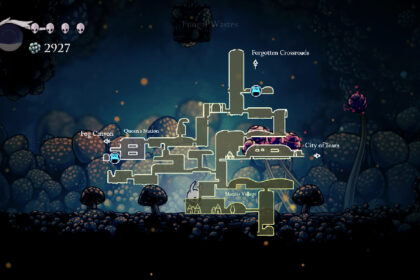
Filter Results
Uses two-dimensional "sprites", 2D images created and used on a flat plane, as opposed to the three-dimensional models or environments found in 3D games.
Suggest updated description
Suggest description for this tag
- Play in browser
- Educational
- Interactive Fiction
- Visual Novel
- Xbox controller
- Gamepad (any)
- Touchscreen
- A few seconds
- A few minutes
- High-contrast
- Downloadable
- In game jams
- Not in game jams
Top Games Games Tools Game assets Comics Books Physical games Albums & soundtracks Game mods Everything else tagged 2D and essay (10 results)
- New & Popular
- Top sellers
- Most Recent
Explore games tagged 2D and essay on itch.io. Uses two-dimensional "sprites", 2D images created and used on a flat plane, as opposed to the three-dimensional models o · Upload your games to itch.io to have them show up here.
New itch.io is now on YouTube!
Subscribe for game recommendations, clips, and more
- Scripting API
- unity3d.com
Unity Manual
- Unity User Manual 2021.1
- 2D game development quickstart guide
Creating a 2D game
Before you create a 2D game, you need to decide on a game perspective and an art style .
To create a 2D game, set up your Unity project and then familiarize yourself with the relevant concepts in the following order:
Fundamentals
Sprites A 2D graphic objects. If you are used to working in 3D, Sprites are essentially just standard textures but there are special techniques for combining and managing sprite textures for efficiency and convenience during development. More info See in Glossary
Building in-game environments
Character animation, user interface.
Profiling, optimizing and testing
GameObjects The fundamental object in Unity scenes, which can represent characters, props, scenery, cameras, waypoints, and more. A GameObject’s functionality is defined by the Components attached to it. More info See in Glossary are fundamental objects in Unity that represent characters, props, scenery, and more. Every object in your game is a GameObject.
GameObjects represent the items in your game; the space in which you place them to build your level is called a scene A Scene contains the environments and menus of your game. Think of each unique Scene file as a unique level. In each Scene, you place your environments, obstacles, and decorations, essentially designing and building your game in pieces. More info See in Glossary . Scenes in Unity are always 3D; when you make a 2D game in Unity, you typically choose to ignore the third dimension (the z-axis) but you can also use it in special cases, for example when making 2.5D games.
The behavior of GameObjects is defined by blocks of functionality called components. The following components are fundamental for 2D games:
Transform : the Transform component A Transform component determines the Position, Rotation, and Scale of each object in the scene. Every GameObject has a Transform. More info See in Glossary determines the Position, Rotation, and Scale of each GameObject in the scene. Every GameObject has a Transform component.
Sprite Renderer A component that lets you display images as Sprites for use in both 2D and 3D scenes. More info See in Glossary : the Sprite Renderer component renders the Sprite and controls how it looks in a scene.
Cameras A component which creates an image of a particular viewpoint in your scene. The output is either drawn to the screen or captured as a texture. More info See in Glossary : devices that capture and display the world to the player. Marking a Camera as Orthographic removes all perspective from the Camera’s view. This is mostly useful for making isometric or 2D games.
Collider 2D : this component defines the shape of a 2D GameObject for the purposes of physical collisions A collision occurs when the physics engine detects that the colliders of two GameObjects make contact or overlap, when at least one has a Rigidbody component and is in motion. More info See in Glossary . See 2D Physics .
Components are UI (User Interface) Allows a user to interact with your application. Unity currently supports three UI systems. More info See in Glossary representations of C# classes; you can use scripts to change and interact with components, or create new ones. See the Scripting section for more details.
All 2D games need scripts A piece of code that allows you to create your own Components, trigger game events, modify Component properties over time and respond to user input in any way you like. More info See in Glossary . Scripts respond to input from the player and arrange for events in the gameplay to happen when they should.
For details on how to use scripts in Unity see Scripting Overview . Also see the Unity Learn Beginner Scripting course.
Scripts are attached to GameObjects, and any script you create inherits from the MonoBehaviour class.
Sprites are 2D graphic objects. You use Sprites for all types of 2D games. For example, you can import an image of your main character as a Sprite.
You can also use a collection of Sprites to build a character. This allows you greater control over the movement and animation of your characters.
Importing and setting up Sprites
Import your Sprites with Unity’s recommended settings; see Importing and Setting Up Sprites .
Rendering Sprites
Use the Sprite Renderer component to render your Sprites. For example, you can use the Sprite Renderer to change the color and opacity of a Sprite.
See the Introduction to the Sprite Renderer Learn tutorial . Sorting SpritesBy organizing Sprites in layers, you can create an illusion of depth. You can sort Sprites according to many strategies. See Sorting Sprites for full details. For example, you might sort Sprites along the y-axis, so that Sprites that are higher up are sorted behind Sprites that are lower, to make the Sprites that are higher appear further away than the Sprites that are lower.
To set the overlay order of Sprites, use Sorting Layers .
To group GameObjects with Sprite Renderers , and control the order in which they render their Sprites, use Sorting Groups .
Sprite Atlas
You can use a Sprite Atlas A texture that is composed of several smaller textures. Also referred to as a texture atlas, image sprite, sprite sheet or packed texture. More info See in Glossary to consolidate several Textures into a single combined Texture. This optimizes your game and saves memory. For example, you can add all your Sprites associated with a particular character or purpose to a Sprite Atlas.
See the Introduction to the Sprite Atlas Learn tutorial .
Environment design refers to the process of building your game’s levels and environments. You can combine the environment design tools in this section in whichever way makes the most sense for your game; for example, you can make a top-down game using only 9-slice, or you can make a side on platformer with Tilemap and SpriteShape.
9-slicing is a 2D technique that allows you to reuse an image at various sizes without needing to prepare multiple assets. Unity can dynamically stretch and tile designated parts of a Sprite to allow one Sprite to serve as the border or background for UI elements of many sizes. See 9-slicing sprites .
For example, you could use 9-slicing to stretch a Sprite to shape when you build a 2D level.

See the Using 9-Slicing for Scalable Sprites Learn tutorial .
The Tilemap A GameObject that allows you to quickly create 2D levels using tiles and a grid overlay. More info See in Glossary component is a system that stores and handles Tile assets for creating 2D levels. Use the 2D Tilemap Editor package (installed by default) to use Tilemaps.
For example, you can use Tilemaps to paint levels using Tiles and brush tools and define rules for how Tiles behave.

See the Introduction to Tilemaps Learn tutorial .
2D Tilemap Extras
To add some extra Tilemap assets to your Project, install the 2D Tilemap Extras package. This package contains reusable 2D and Tilemap Editor scripts that you can use for your own Projects. You can customize the behavior of the scripts to create new Brushes that suit different scenarios.
Isometric Tilemaps
For games with isometric perspective, you can create Isometric Tilemaps .
SpriteShape
In a similar way to a vector drawing tool, SpriteShape provides a more flexible way to create larger Sprites, such as organic-looking landscapes and paths. See the Sprite Shape Profile .
See the Working with SpriteShape tutorial .
There are three different ways you can animate 2D characters:
Frame-by-frame
Frame-by-frame animation is based on the traditional cel animation technique of drawing each moment of an animation as individual images, which are played in fast sequence, like flipping pages on a flipbook.
To do frame-by-frame animation, follow the Frame-by-frame Animation workflow .

See the Introduction to Sprite Animations Learn tutorial .
In cutout animation, multiple Sprites make up the body of a character, and each piece moves to give the visual effect of the whole character moving. This animation style is similar to skeletal animation (see below), except that the Sprites don’t bend.

With skeletal animation, you map a Sprite or a group of Sprites onto an animation skeleton. You can create and define animation bones for characters and objects, that define how they should bend and move. This approach allows the bones to bend and deform the Sprites, for a more natural movement style. To use skeletal animation, you need to use the 2D Animation package (installed by default).
For a 2D Animation workflow, including a guide to working with the Bone Editor, see the 2D Animation documentation .

This section describes your graphics options when using Universal Render Pipeline A series of operations that take the contents of a Scene, and displays them on a screen. Unity lets you choose from pre-built render pipelines, or write your own. More info See in Glossary (URP).
Because you’re using URP with the 2D Renderer, you can use the Light 2D component to apply optimized 2D lighting to Sprites. For details, see Introduction to Lights 2D .

To set up lighting:
Prepare your Sprites for lighting. For details, see Preparing Sprites for Lighting .
Set up normal map A type of Bump Map texture that allows you to add surface detail such as bumps, grooves, and scratches to a model which catch the light as if they are represented by real geometry. See in Glossary and mask Textures. 2D Lights can interact with normal map and mask Textures linked to Sprites to create advanced lighting effects, such as normal mapping . See Setting up normal map and mask Textures .
Create a 2D Light GameObject; see 2D Lights Properties .
Configure the 2D Renderer Data asset; see Configuring the 2D Renderer Asset .
(Optional) if you want to apply 2D Light effects to a pixel The smallest unit in a computer image. Pixel size depends on your screen resolution. Pixel lighting is calculated at every screen pixel. More info See in Glossary art game, see 2D Pixel Perfect .
See the Lighting in URP Learn tutorial .
To define the shape and properties that a Light uses to determine the shadows it casts, use the Shadow Caster 2D component . Increase the Light’s Shadow Intensity above zero.

Enhanced look and feel
Particle systems and post-processing A process that improves product visuals by applying filters and effects before the image appears on screen. You can use post-processing effects to simulate physical camera and film properties, for example Bloom and Depth of Field. More info post processing, postprocessing, postprocess See in Glossary are optional tools that you can use to add polish to your game.
Particle systems
You can use particle systems to create dynamic objects like fire, smoke or liquids, as an alternative to using a Sprite. Sprites are more suited to physical objects. See Particle systems A component that simulates fluid entities such as liquids, clouds and flames by generating and animating large numbers of small 2D images in the scene. More info See in Glossary .

Post-processing
You can use post-processing effects and full-screen effects to significantly improve the appearance of your game. For example, you can use these effects to simulate physical camera or film properties, or to create stylized visuals.
URP has its own post-processing implementation. See Post-processing in the Universal Render Pipeline .

The Physics 2D settings define limits on the accuracy of the physical simulation in your 2D game. See 2D Physics .
This video provides an overview of 2D physics features in Unity 2020.1.
To learn how to use Unity’s 2D physics engine A system that simulates aspects of physical systems so that objects can accelerate correctly and be affected by collisions, gravity and other forces. More info See in Glossary , see the 2D Physics Learn tutorial .
The following 2D physics tools are useful for 2D games.
Rigidbody 2D
Collider 2d, 2d effectors.
A Rigidbody A component that allows a GameObject to be affected by simulated gravity and other forces. More info See in Glossary 2D component places a GameObject under the control of the physics engine. See Rigidbody 2D .

Collider 2D components define the shape of a 2D GameObject for the purposes of physical collisions. You can also use Collider An invisible shape that is used to handle physical collisions for an object. A collider doesn’t need to be exactly the same shape as the object’s mesh - a rough approximation is often more efficient and indistinguishable in gameplay. More info See in Glossary 2D components for input detection. For example, in mobile games you can use them to make Sprites selectable.
The Collider 2D types that you can use with Rigidbody 2D are:
Circle Collider 2D
Box Collider 2D
Polygon Collider 2D
Edge Collider 2D
Capsule Collider 2D
Composite Collider 2D

When you set a Collider 2D as a Trigger (by enabling its Is Trigger property), it no longer behaves as a physical object, and it can intersect with other Colliders without causing a collision. Instead, when a Collider enters its space, Unity calls the OnTriggerEnter function on the Trigger GameObject’s scripts.

Joints attach GameObjects together. You can only attach 2D joints A physics component allowing a dynamic connection between Rigidbody components, usually allowing some degree of movement such as a hinge. More info See in Glossary to GameObjects that have a Rigidbody 2D component attached, or to a fixed position in world space. See 2D Joints .
Use Effector 2D components A functional part of a GameObject. A GameObject can contain any number of components. Unity has many built-in components, and you can create your own by writing scripts that inherit from MonoBehaviour. More info See in Glossary with Collider 2D components to direct the forces of physics in your scene when GameObject Colliders come into contact with each other. See 2D Effectors .
You can add background music and sound effects to your game in Unity; see Audio Overview . Use third-party software to create your audio and import it into Unity with the recommended settings.
If you want to add a menu or help to your game, you need to set up a user interface . To set up a user interface, use Unity UI .
Profiling, optimizing and testing a build
Profiling allows you to see how resource-intensive the different parts of your game are. You should always profile your game on its target release platform; see Profiling your application .
After profiling, you can use the results to make performance improvements and optimizations. See Understanding optimization in Unity .
Test your game and your code with the Unity Test Framework; see Unity Test Framework .

When you’ve finished your game, you’re ready to publish it. See Publishing Builds .

The evolution of 3D games
How the third dimension has added more than just depth to your favourite games
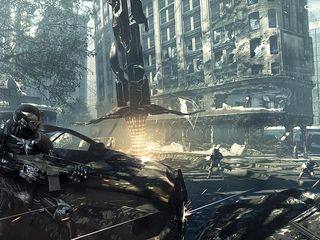
- A history of 3D gaming
- Two and a half dimensions
Once upon a time, a handful of pixels madeth the space invader. Graphics were iconic, not representative: a picture on the box or manual showed you what it was meant to look like, and your mind filled in the necessary gaps.
Nobody could have predicted that in just 20 years, we'd be immersing ourselves in realistic living cities, flying over gorgeous tropical islands and going head-to-head with astoundingly rendered characters – and not even being particularly impressed.
But in years to come, modern games like Grand Theft Auto IV and Crysis will look just as dated as the classics we remember from the days of yore. In fact, they'll probably look more so: while the simplicity of a retro game's look has a certain charm to it, old 3D titles tend to flat-out look old. Try almost any hit game of the mid-to-late '90s for proof of that.
3D is about more than just pretty graphics. Done right, it makes gameworlds come alive. A 2D sprite can only do what it's been drawn to do, while a 3D character has a complete endoskeleton and can respond naturally (at least in theory) to anything that happens – the classic example being 'ragdolls', where a fallen enemy doesn't simply slump to the ground in a canned animation, but tumbles off the railing and lands with one arm draped over a step.
You can create worlds rather than merely levels, unlocking the player's ability to truly explore and experience the world as the character would. You can build simulations ready to be poked and prodded, abused and enjoyed. It's phenomenally powerful, to the point that many nominally 2D games are now really 3D ones viewed from a locked perspective, so that they can better use the possibilities of animation, physics and art assets.
Why render hundreds of frames of animation you may not be happy with when you can make a model and keep tweaking it until it's perfect? You may lose some of the old-school charm, but you gain far more.
Get daily insight, inspiration and deals in your inbox
Get the hottest deals available in your inbox plus news, reviews, opinion, analysis and more from the TechRadar team.
The first big 3D success was Battlezone , a tank game released in 1980 that used vector graphics to create its work, much like Asteroids . While a simple game by modern standards, it was fiendishly complex for such an early example, offering the ability to go anywhere in an (admittedly featureless) world, hide from attacks and fight enemies.
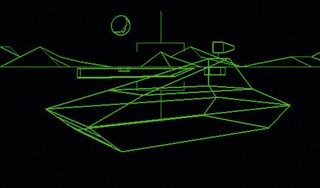
TANK WARFARE: Battlezone was thought so realistic that the US Army used it to train tank gunners
Not impressive enough? In 1987, the first Freescape game, Driller , hit the shelves. It offered a full 3D world on platforms as basic as the Spectrum, and was an actual game rather than just a tech demo. Next to that, it didn't matter that it was ugly, the frame-rate was abysmal and the game itself wasn't actually much fun – it got lots of attention.
The Freescape engine in its various forms was used in several famous releases, including Castle Master and its sequel, and the all-out 3D Construction Kit. Legend has it that someone somewhere once made something other than a surreal, unplayable mess in this, but we never saw it.
Freescape also made it onto TV, in the form of the absolutely atrocious Craig Charles vehicle Cyberzone , one of the most toe-curling attempts at creating a games-related TV show ever. Thankfully, all that remains of it is a single YouTube clip – and that's painful enough.
Most of the early 3D games stuck to simpler technologies. These days, we think of 3D as free-roaming, real-time engines, but back in the day, simply getting a game to look 3D was impressive.
As early as 1981, games were achieving this feat – 3D Monster Maze was terrifying a generation with its slowly updating screens and roaming T-Rex, and the first Ultima game was offering a very advanced hybrid of block-by-block movement 3D graphics for its dark dungeons alongside a topdown 2D overworld for exploration.
Interestingly, while most developers kept pushing further towards 3D, Ultima ended up pulling back, switching entirely to a top-down sprite-based system for the series' glory days. The 3D element later developed into its own spin-off – the Ultima Underworld games – before returning for the series' sadly disappointing final outing – the buggy, system-murdering Ultima IX: Ascension .
The problem has always been the same: the potential of 3D fights with the limitations of current systems, whether it's simply displaying the graphics in the first place or making them look as good as other art styles.
Going back to an early '90s 3D game now is almost painful. Flat faces, non-moving lips during conversations, stick-figure character models, smeary textures and appalling animation... the list of problems goes on.
Some games got past this, sometimes bizarrely – most obviously Core Design's legendary heroine Lara Croft, who managed to become an international sex symbol despite looking like a pointy-chested Pinocchio. Most survived simply because playing a 3D game felt futuristic, even if the lack of polygons our PCs could push out meant that 2D games were usually much more detailed.

TOMB RAIDER: The realism of the, ahem, gameworld has certainly come on
For much of 3D's history, the trick has been getting the effect of the third dimension without having to do it for real. The early Wing Commander games gave the illusion that you were flying through 3D space, but really they were just scaling sprites up and down.
In first-person shooters, it quickly became clear that walls were easy thanks to their incredibly simple geometry, but snarling hell-beasts dripping blood from their fangs were asking a bit too much. So developers compromised.
The worlds themselves were made in 3D, initially just as mazes. Then, as texturing became more advanced, more realistic-looking areas were created, like those in Catacomb 3D .
Interestingly, the state of the art varied dramatically across genres. Shooters had to be fast and fluid, so they were kept simple. In the case of early games like Core Design's Corporation , things were stripped down so much that the engine didn't even bother with textures.
Id's first breakout hit – Wolfenstein 3D in 1992 – had textures to depict the inside of its supposed Nazi castle stronghold, but all the maps were completely flat and the interaction was limited to just opening doors and shooting enemies. Ultima Underworld , which came out in the same year, had sloped surfaces, advanced lighting effects, dialogue, puzzles, magic systems, physics, 3D objects, a real plot, the ability to look up and down instead of having your view locked straight ahead and much more.
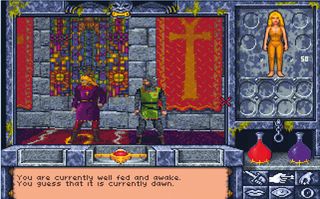
TRADE-OFF: For the Ultima Underworld games, the payoff for this level of 3D quality was poor performance and a small viewing window
Ultima Underworld could afford to push these limits because as a role-playing game, it was inherently slower than a shooter, and the audience was more willing to accept the necessary limitations, like the small viewing window. It didn't hurt that while publisher Origin's official motto was 'We Create Worlds', its unofficial credo was 'Your PC Will Cry'. It never did worry about system requirements...
Current page: A history of 3D gaming
This sinister Omen gaming PC build just might keep you up at night
Can Steam Deck get even better? Nvidia’s expanded GeForce NOW support is a resounding yes
Quordle today – hints and answers for Monday, May 6 (game #833)
Most Popular
- 2 It's officially time to abandon the Oculus Quest 2, as new VR games and apps are dodging the aging headset
- 3 The Arc browser just launched and yes, it really is that good
- 4 VPNs aren't invincible—5 things a VPN can't protect you from
- 5 A researcher compared Android and iOS for app security, and there’s a clear loser
- 2 A researcher compared Android and iOS for app security, and there’s a clear loser
- 3 I love my iPad – but these 5 upgrades would make me drop it for the new one
- 4 A key Apple Watch health feature just got a landmark stamp of approval
- 5 Samsung's archrival strikes crucial partnership with Nvidia's closest ally to deliver key next-gen memory — SK Hynix teams up with TSMC to advance HBM development but could this move encourage TSMC to become like Intel?

- Order Now
2D and 3D Games
Published Date: 23 Mar 2015
Disclaimer: This essay has been written and submitted by students and is not an example of our work. Please click this link to view samples of our professional work witten by our professional essay writers . Any opinions, findings, conclusions or recommendations expressed in this material are those of the authors and do not necessarily reflect the views of EssayCompany.
Difference Between 2D and 3D Games:
Introduction:.
The first concept we should know that what 2D is and what is 3D means. 2D means 2dimension, here everything happens in a 2D plane. Like if we draw any picture on a paper then we can see that only from a single perspective, what kind of perspective we follow to draw that picture. For 2D surface the picture would be flat, without depth. To draw a 2D picture we use matte painting also. Like that in 2D games we can see the whole game from a single perspective whatever we follow to make it. And 3D means 3 dimensions, means here we can add depth in a picture. In 3D games we can see the character from different perspective. Here the pictures have depth and shadow which makes the picture real and it looks like something happens in front of our eye in real life.
About 2D games:
2D games are also called Platform game. The word platform also describes that something held on a platform. Here the player can run, jump, shoot, collect powers on a platform. It is a video game genre; 2D games are become very old. But some developers still like to play 2D games to get the innovative idea, because we learn everything from past. That's why they wants to play 2D games to make their game more interesting and get idea to give some new feature in their game. Mostly the characters of 2D games are cartoonish and unrealistic. We can't give a realistic feel in our 2D character. But in 3D it is possible because of depth. By using depth we can make a character which would look like a real. Mostly platform games are based on some levels, if the player can kill all enemies or cross a certain part which he\she has to cross (like-Mario) then only the player can move to the next level. In next level may be there would be more enemies which the player has to kill.
As per my knowledge the era of platform games started in the early 1980's and the 3D games started in mid of 1990. There is some confusion that which is the first 2D games.
Frogs is an arcade game which released in 1978, this is the first game where the character can jump on the screen, making the genre's earliest ancestor. Space Panic, which is also arcade game and released in 1980, is sometimes credited as the first platform game. Donkey Kong is an arcade game created by Nintendo and released in July 1981, was the first game that allowed players to jump over elements which are there and across gaps, making it the first true platformer. There are some versions of Donkey Kong. The next version of Donkey Kong is Donkey Kong Jr. which is also become a famous game. Donkey Kong introduces Mario. The third version of Donkey Kong was not become so famous but it succeeds by Mario Bros, which is a platform game and it has an extra feature of multiplayer, where two players can play simultaneously. By using the same rule in future many gaming companies made multiplayer games. Pitfall is a video game released by Activision in 1982 for Atari 2600.
Then 16 bit computer had introduced and it brought evolution to this genre, this time Saga introduced Mega Drive which is forth generation video game console. This console had introduced in Japan in 1988 and 1990 in Europe. It was released in 1989 in North America under the name of “Genesis”. This was Saga's most successful console. It competes with TurboGafx-16 which was released one year earlier in Japan under the name of PC Engine.One more console had introduced in this time that was Super Nintendo
Entertainment System
Entertainment System which is also called Super NES. It is also a 16 Bit video game consol which released by Nintendo in 1990. This consol had released in many countries like North America, Europe, Australia, and South America in between 1990 to1993. In Japan and Southeast Asia this system is known as Super Family Computer and in South Korea this system is known as Super Comboy which Distributed by Hyundai Electronics.
Both systems were built for 16-bit computers and offered improved graphics and sound over the 8-bit NES. After Super NES released the Super Mario World released for this consol. To compete with Sonic the Hedgehog Saga released Sonic the Hedgehog which is platform game developed by Sonic Team and published by Saga for Mega Drive system. It was the first game developed by Sonic Team. Sonic Team is originally known as Saga AM8 which is a Japanese computer and video game developer and established in Ota, Tokyo, Japan in1990. Sonic include a feature of large field that scrolled effortlessly in all direction as well as manners of curve hill and a complex physics system that allows player to rush through its level with well placed jumps and rolls. It gives a massive hit, was a successful pack-in new system.
At the end of 16 Bit era some games were released like Yoshi's Island and Donkey Kong Country. Then new kind of hardware was released and it takes player's attention, so the attention was totally shifted away from traditional 2D genre.
About 3D games:
The term 3D platformer referred that featured gameplay in three dimension area and polygonal 3D graphics. Games which have 3D gameplay but 2D graphics is comes under in Isomertic Games. On the other hand those games that have 2D gameplay in 3D graphics are called 2.5D that means these games are between 2D and 3D. In 3D we can implement depth to an object which gives it a real look. In 3D games the characters are look like real character which exists in real world, we can see the facial expression in character's face. In 3D games there are some missions, where the players completes one mission then he\she go to the next level and next mission would be more tougher than the previous mission. In 3D games multiplayer is mostly played by the players because they want to play together to beat one another or they make a group to beat other group and communicate with one another.
After the era of 2D games, gaming companies first tried to make a platform game with 3D game and 2D graphics and isometric perspective. These games are also very old as the genre itself. The first game which have 3D perspective and moving camera came around in the mid 80's. Trailblazer was released for various computer in 1986, used a simple linescroll effect to create a forward scrolling 2.5D (also called pseudo-3D games) play field where players manipulated a bouncing ball to leap over obstacles and pitfalls.
In 1987, Squaresoft released 3D World Runner, which is a forward scrolling action game, here in this game the player has to leap over obstacles and chasms. In 1990, an Estonian developer called Bluemoon released Kosmonaut which is a forward-scrolling driving/action game similar to Trailblazer, which consisted almost entirely of difficult platform-jumping obstacle courses. While the gameplay took place in three dimensions, and the graphics were polygonal it is considered pseudo-3D because it used a fixed viewpoint. Alpha waves which is a French computer game is to be found as the earliest example of a true 3D platformer, which is created by Christophe de Dinechin and published by Inforgrames in 1990 for the Atari ST, Amiga and PC. 3D games give the character a smooth movement, the camera angles would be from different point of view.
A small developer called Exact released a game for the X68000 computer called Geograph Seal in 1994. This game was fully 3D polygonal first person shooter hybrid with platform jumping component. Players piloted a frog that could jump, then double jump, and triple jump high into the air, as the camera is also moved to show players jump and landing. In addition to shooting, jumping on enemies was a primary feature of attack. This was the first 3D platform game that released in Japan, but it never ported to another platform and not released outside of Japan. The following year, Exact released their follow-up to Geograph Seal for Sony's new PlayStation console. Jumping Flash!, released in April 1995, this game is generally regarded as a direct continuation of the gameplay concepts in Geograph Seal, which was likewise a mix of first-person shooting and platforming, with similar controls and camera-work. Here the frog was more cartoonish than the previous one it's like a rabbit which is called “Robbit”. In this game the level design had an even greater focus on platform gaming, it was released in Europe and North America. It was titled as first 3D consol game. A Saga Saturn game Bug! Was released in 1995, it offered a more conservative approach to true 3D platforming. In this game players could move in all directions, but it did not allow movement along more than one axis at once — the player could move left to right, or forward and backward, but not diagonally left and backward at the same time. This game was very similar to 2D games but considered as true 3D games. This game had an extra feature that the player could climb on wall and ceiling, which was a great success.
2D platformer game
In 1995 Fade to Black was released by Delphine Software which was a sequel of their popular 2D platformer game Flashback, it was the first attempt to bring a popular 2D platform game series into 3D. It had puzzle-oriented level design style and step-based control. It dose not follow the criteria of platform game and it came under action adventure game. It used true 3D characters and other objects. But it's environment were created using rigid engine which was similar to Wolffenstein 3D in that it could only render square flat corridors. Sony, Saga and Nintendo were under great deal of pressure to release mascot platformer before 1996 holiday season. Sony choose an existing project by developers Naughty Dog, which was a small developer at the time who released the Way of the Warrior recently. Then Crash Bandicoot beat Nintendo's new console to market in North America and it was released in the time for the holiday in Japan. Before switching to multiplatform releases in the following console generation crash would remain Sony's unofficial mascot for the next several years. Then Saga had tasked their American studio, STI, with bringing Sonic the Hedgehog into 3D. The project was titled as Sonic Xtream, it was to feature a radically different approach for the series with Fisheye camera and multidirectional gameplay like Bug!
3D games give the player a great area of play field than 2D platform games. Final Fantasy VII was a major breakthrough in RPG first person shooter which is still so popular game. Tomb Rider was one of the best selling game on the PlayStation in gaming industry. Sixteen generation era was the best system selling era. By the time Saga had produced 3D Sonic games Sonic Adventure on its new Dreamcast console. It used to play smoothly the games like Mario 64 with some extra feature, mostly it emphasis on speed. Then Nintendo launched GameCube console without releasing any platform game for it, but in 2002 Nintendo released Super Mario Sunshine that was the second 3D Mario game. Because of low numbers of level, and its level design was not so good so it was failed to make a good marketing. Platform game is a vital genre but it was failure to capture the popularity and market that they held once in 1998. In 1998 platform games had 15% of share of market but within four year it comes down in 2% while the RPG and first person shooter have continued the grow and popularity.
Similarity In 2D and 3D games:
There are some similarities in 2D and 3D games like both the game have some goal that player has to finish that then only he\she can move to the next level or mission or win the game.
In both the games the character has the ability to move forward, backward, jump, shoot to kill their enemies. It depends on the game, which game we are playing. If it is an intelligent based game then the controls would be different.
Both the games are made for some console for 3D there are some extra consoles are there. Playstation 2, playstation 3 are the consoles for 3D games.
Replay Ability:
In both kind of game another main similarities is replay ability. We can play several times. Like if we loose one level then we can play it again to win that level and move to the next level.
Difference between 2D and 3D games:
The major difference between 2D and 3D games are their characters. In 2D games the characters are like cartoonish, they don't look like a real one. But in 3D characters sometimes they also look like cartoonish but due to depth the characters look like real. In 3D characters we can show the emotion in character's face. The characters take position when he\she shoot his\her enemy.
Interaction:
We can see the 2D character from only one perspective view may it be from side view, top view or player's eye view (here the camera is placed behind the character). We can't implement all of these in a 2D game. But in 3D games we can see the player from different point of view in a game. We can move the camera in 3d games in three directions-sideway, up and down. Some of the games like Warcraft 2, Fifa here we use isometric point of view. This angle is not comes under 2D nor 3D. In isometric view the camera angle would be some fixed angel from where the characters look like 3D character. But these are not 3D games.
And another major difference is graphics, in 2D computer graphics are digital images.
There are two types of graphics one is Raster graphics and another one is Vector graphics. Raster graphics or bitmap are composing by array of pixel, here each pixel has different color or shade. They are editing by changing color array by array. These are used to make mobile phone games, very old computer games. Vector graphics are composed with path, here path are use to establishing mathematical relationship between points within the image. In photographic images vector graphics are mainly used. 3D computer graphics are use to represent the 3D geometrical data. Then these data's are manipulated by the computer via 3D computer graphics software to customize their display, movement, and other appearance. Sometimes we use some 3D model which is a mathematical representation of geometric data that is contained in a data file.
In 3D character we can implement light, shadows by using some software like-3ds Max,
Autodesk Maya etc. by using these software's we can make some character and then we can implement those characters in our games.
Background:
In 2D games we use a simple picture or some matte painting image for background, but in 3D games we use skybox that is the surrounding world. Skybox is a box which covered by some image which we can make by collage work in Adobe Photoshop. But there is a condition that in that image both edges should be similar. I mean it should be snapped together edge-to-edge. Then only we can feel the real world, if any difference is shown in that image then we can't see the proper output which we want. Then we have to import that image in Autodesk Maya or any 3D modeling software. So we should be very careful when we work on skybox.
Level Design:
Level design is based on games that which type of game it is. Before implementing we should be very clear that how many players are in the game, how many levels we are going to create. First we have to know that what we are going to make a 2D game or a 3D game. Because here realism do some matters. In 2D games it doesn't matters too much but in 3D games it gives a biggest difference. In 3D games we have to give a close attention on Texturing, lighting, and all the other things would be in three dimension.
System Requirement:
To run a 2D game the system requirement is not a big factor. It takes hardly 512 Mb RAM, without graphics card we can play 2D games in our system. It does not make difference too much in gameplay. We can play some 3D games also in this configuration. But some games are made with high graphics for that we need at least 1 GB RAM and if we use graphics card also with this configuration then the game would be more smooth and we can see the texture and the other things which used in the game would be visible clearly.
Game Engine:
Game engine is a kind of library, in library we can read books, if forget about the topic which studied then we can read it again. That means we can reuse the source. Like that game engine is a library of core function which we use in game. Game engines are as usually related to graphic, networking, input and other system. This is not a part of gameplay but it is a non specific part of game. By using this engine we can make several games. In most of the game engine we can play 2D and 3D games both.
Key Control:
In 2D games we use around 5-7 keys to control the whole game, hardly we take 10keys. This many key controls are enough for a 2D game. Sometimes we use mouse and some keys to control a game, and sometimes we use only mouse to control a 2D game (e.g.-Duck Hunt). But to control 3D game it takes around 15-20 keys and mouse to control the whole game. In a mission based fighting game like Delta Force we choose primary weapon, secondary weapon, bombs, grenades, binocular, map and many other options are there.
Believability:
2D games do not give a real feel. We play 2D game just for fun. Mostly children love to play 2D games, because these kinds of games are easier for them and they enjoy it. 3D games are looks real which I already discussed, it feels like the player itself in the battle ground. The surrounding world gives that feel. There are some simulation games which are so original. Mostly this kind of games made for soldiers to give them training by playing games. In Simulation games the controls are exactly same which exist in the real thing. Like if a player drive an aero plane then the controls and the activities are be exactly there which exist in real aero plane. The enemies would come they also try to crash player's plane. If the plane crash then the player would feel vibration, which gives the reality of that game.
Market of 2D games:
The market of 2D game becomes very low because nobody wants to play this kind of game. When 2D games first released it was so popular, gaming companies got million dollars as profit by selling 2D games. Because 2D games were new things for people, so they tried this to accept the challenge. But now these kinds of games are become very old. This is the era of 3D games; most of the gaming companies who made 2D games are now making 3D games because of market demand. Now people become fading up by playing 2D games, they want something more. 3D games give them a different feel to the players. So people love 3D games and it has a great market. Companies do not want to make any 2D games because of its down market, but also we make 2D games.
To learn about making 2D games gaming colleges first learn about 2D games, that's why 2D games are still producing in the market.
Online play option:
We play online games which are called MMO that is Massive Multiplayer Online games. When we play online games nobody wants to play 2d games, they want to play 3D games. Online playing game is a genre of role playing computer games with a large number of players interact with one another in a virtual gaming world. Like when we play Counter Strike in online then we make two teams and fight with opposite team. First we choose one character, called Avatar then we start playing. In game we can commend to my mates to cover me, plant bomb and more other commends.
Future Development:
All gaming companies do not want to make 2D games, they are concentrating on producing 3D games. Whatever games they released they wants to improve them and make a new version of that game. People do not like to play 2D games but still 2D games are producing because in gaming institute first they teach us how we can make a 2D game. It is the basic idea of making game; they start with 2D games and then learn about 3D games. In future gaming companies try to make 3D games by adding some extra feature. May be they introduce some new console for playing game.
Conclusion:
Whatever difference between 2D and 3D games, players do not care on it. Whatever game we play, we play just for entertainment. We just want some relaxation after doing lot of work, so we play game. We play games sometimes to learn something. By playing 2D games children learn so many things. Like color, shape, fruit name, flower name etc. by playing that kind of game which give them knowledge about these things.
Bibliography:
http://hge.relishgames.com/
http://2dengine.com/page.php?p=about
http://gpwiki.org/index.php/Game_Engines
http://www.devmaster.net/engines/
http://www.selfgrowth.com/articles/Key_Advantage_And_Difference_Between_3
D_Games_And_2D_Games.html
http://ezinearticles.com/?Whats-the-Difference-Between-2D-and-3D-Anyway?
&id=1634425
http://www.gameproducer.net/2007/07/27/differences-between-2d-and-3d-gameart-production/
http://forums.guestbook.com.tw/thread-43939-1-1.html
http://books.google.co.in/books?
id=iX3oWHNf9hMC&pg=PA209&lpg=PA209&dq=difference+between+2d+and+3
d+games&source=bl&ots=jdvcEWDJDm&sig=KA0WKC9fGQaqMMmJ_Adeyl6q
wMY&hl=en&ei=9OFiSqoexoCRBd_jlfoP&sa=X&oi=book_result&ct=result&resnu
http://blog.media-freaks.com/discerning-between-2d-and-3d/
http://www.theiphonedvd.com/blog/understanding-the-difference-between-2dand-3d-animations/
http://www.americanchronicle.com/articles/view/107414
http://www.articlesbase.com/graphic-design-articles/2d-and-3d-computergraphics-553432.html
Word doc goes here, ignore any pictures that are in them

Our Service Portfolio
- Essay Writing Service
- Dissertation Writing Service
- Assignment Writing Service
- Coursework Writting Service
- Article Writting Service

Want To Place An Order Quickly?
Then shoot us a message on Whatsapp, WeChat or Gmail. We are available 24/7 to assist you.

Do not panic, you are at the right place

Visit Our essay writting help page to get all the details and guidence on availing our assiatance service.
Get 20% Discount, Now £19 £14 / Per Page 14 days delivery time
Our writting assistance service is undoubtedly one of the most affordable writting assistance services and we have highly qualified professionls to help you with your work. So what are you waiting for, click below to order now.
Get An Instant Quote

I DON'T WANT DISCOUNT
Our experts are ready to assist you, call us to get a free quote or order now to get succeed in your academics writing.

IMAGES
VIDEO
COMMENTS
2D gaming is not only more accessible for players, but for developers as well. Fabrice Breton of CowCat Games ( Riddled Corpses Ex, Xenon Valkyrie+) said "2D games are easier to program - you only have to handle two coordinates instead of three. And it makes sense because all our monitors and TVs are just that.".
Abstract. Serious games are gaining an ever-increasing interest of many scholars of the learning process of all educational levels. Important aspects of serious games implementation in education ...
2D game development is a valuable skill set for many reasons: Creativity: It's a great outlet for artistic expression, allowing you to bring your game design ideas to life, create engaging characters, and intriguing storylines. Accessibility: Basic 2D games can be relatively easy and quick to make, making it ideal for beginners wanting to ...
These games are not the type this essay will be focusing on. For the rest of the paper, the games we look at will be ones that have an obvious narrative attached to them, or that are completely story-based. ... Donkey Kong is a 2D platformer, where the player character (an early rendition of Mario) must track down his pet ape who has escaped ...
This difference between 2D and 3D leads to other differences in controls, the game's objective, the movement of the characters, and the environment. For example, the character's movement in 2D games is linear, in different directions, but usually, the character is moving only forward. That is also due to the game environment, which is flat.
Video game technology is changing from 2D to 3D and virtual reality (VR) graphics. In this research, we analyze how an identical video game that is either played in a 2D, stereoscopic 3D or Head-Mounted-Display (HMD) VR version is experienced by the players, and how brands that are placed in the video game are affected. The game related variables, which are analyzed, are presence, attitude ...
1. Find the perfect 2D game engine for your project. The first thing you need is a 2D game maker or game engine, specifically designed for 2D game programming. There are dozens of quality game engines available to you, but they're not all created equal. If you need some helping deciding which 2D game creator is right for you, check out our ...
Platformer Games. 2D platformers have dominated the gaming landscape since the first platformer ever made, Donkey Kong, released in 1981. In fact, the most famous 2D game ever made is a platformer - Super Mario Bros.! Platformers are all about jumping and climbing to explore the environment. There are plenty of genre off-shoots too, including:
Summary. An object with a position (x, y) can be teleported anywhere in a 2D space by giving it a new point, and it can be moved slowly by increasing or decreasing its current position. The ...
Game Design is a subset of Game Development that concerns itself with WHY games are made the way they are. It's about the theory and crafting of systems, mechanics, and rulesets in games. r/GameDesign is a community ONLY about Game Design, NOT Game Development in general. If this post does not belong here, it should be reported or removed.
Create 2D games with Unity. Unity is the world's most popular 2D and 3D game creation platform - 50% of all mobile games are made with it! New users can download the free version of Unity. You'll get access to a platform to create 2D games plus an abundance of free resources from us and our awesome community. Unity for 2D games.
Side-scrolling games, also known as "run and gun" games, are a classic genre of 2d game ideas. In these games, the camera follows the player character as they move horizontally across the screen, shooting enemies and navigating through levels. Famous side-scrollers include Contra, Metal Slug, and Gunstar Heroes.
According to the survey. conducted in [13], Unity 3D Engine has a global market share. of Game Engine which is around 45%, while 47% of game. developers prefer Unity as a smart game development ...
Steam has seen a lot of awesome 2D games over the years. Here's a look at the very best, according to Metacritic score. Highlights. Sea Of Stars is a top-down turn-based RPG that pays homage to classic Super Nintendo RPGs like Chrono Trigger and Super Mario RPG. It features stunning pixel art and an engaging storyline.
10 hours. Cuphead is a modern run and gun action game inspired by cartoons of the 1930s. The visuals and audio are painstakingly created with the same techniques of the era. In other words, buckle up for traditional hand-drawn animation, watercolor backgrounds, and original jazz recordings.
Find games tagged 2D and essay like The White Ship, The Solivagants (or, Videogames Fail at Character Context), 24 years of sleepless nights, Pareidolia (or, Why I Saw Pac-Man Everywhere In 2020), T.M.EYE on itch.io, the indie game hosting marketplace. Uses two-dimensional "sprites", 2D images created and used on a flat plane, as opposed to the ...
The more complex a game and the more stuff in it/the longer it is, the harder it is to make. You're basically describing a game with multiple visual modes (so you need to make more than one asset per character) and movement mechanics, and complex interactive systems (exploration, environments, abilities, character progression, etc).
Creating a 2D game. Before you create a 2D game, you need to decide on a game perspective and an art style. To create a 2D game, set up your Unity project and then familiarize yourself with the relevant concepts in the following order: Fundamentals. Scripting. Sprites A 2D graphic objects. If you are used to working in 3D, Sprites are ...
Vector art styles can look a lot cleaner than other forms of 2D game art, and were used to create iconic arcade classics such as Asteroids and BattleZone. Vector graphics have also been used in Vib-Ribbon, The Banner Saga, and Operius. Vib-Ribbon and The Banner Saga, developed by NanaOn-Sha and Stoic Studio respectively.
The worlds themselves were made in 3D, initially just as mazes. Then, as texturing became more advanced, more realistic-looking areas were created, like those in Catacomb 3D. Interestingly, the ...
Since the 2D Side Scroller Template has been removed with Unreal Engine 5, it has become a lot harder to get started making 2D games in Unreal Engine. In this beginner tutorial I will show you how you can create a simple 2D platformer from scratch which you can then use as a template to create all sorts of 2D or sprite based games. Show more.
Browser games do not have to feature super intense 3D graphics to be entertaining! Some of the most popular games of all time feature basic 2D graphics and instead offer out of this world gameplay. 2D games compensate for their lack of graphics with awesome storylines, fun gameplay and interesting back stories.
The major difference between 2D and 3D games are their characters. In 2D games the characters are like cartoonish, they don't look like a real one. But in 3D characters sometimes they also look like cartoonish but due to depth the characters look like real. In 3D characters we can show the emotion in character's face.